Reina Saito / Aya SawanoTAKIGAHARA FARM/KUMU金沢
Recommend Tour04
Reina Saito / Aya SawanoTAKIGAHARA FARM/KUMU金沢
Recommend Tour04
A trip to Echizen City for people of various backgrounds to experience the city's climate.This time, we will have two people, Sayaka Sawano of “KUMU Kanazawa” and Reina Saito of “TAKIGAHARAFARM,” who work at a hotel in Ishikawa Prefecture, a neighbor of Fukui Prefecture, experience Echizen craftsmanship.
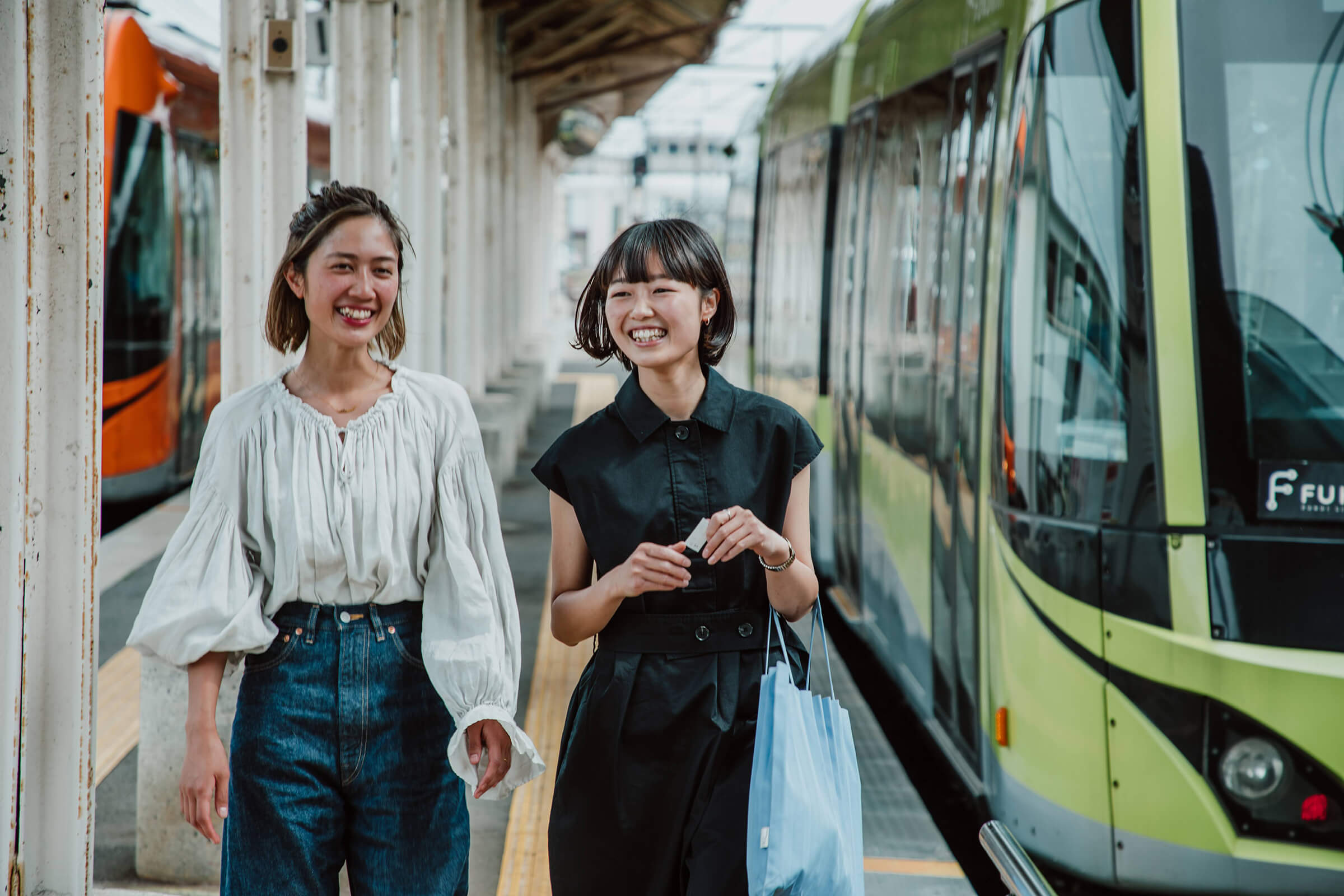 Right/Aya Sawano(KUMU Kanazawa) Left/Reina Saito(TAKIGAHARA FARM)
Right/Aya Sawano(KUMU Kanazawa) Left/Reina Saito(TAKIGAHARA FARM)
They usually welcome many tourists visiting Hokuriku, but surprisingly, they have rarely visited Echizen City.“We hope to discover the charms of this town as we travel around on our own, which will give us hints for the future of tourism.”They landed in Echizen with great anticipation.
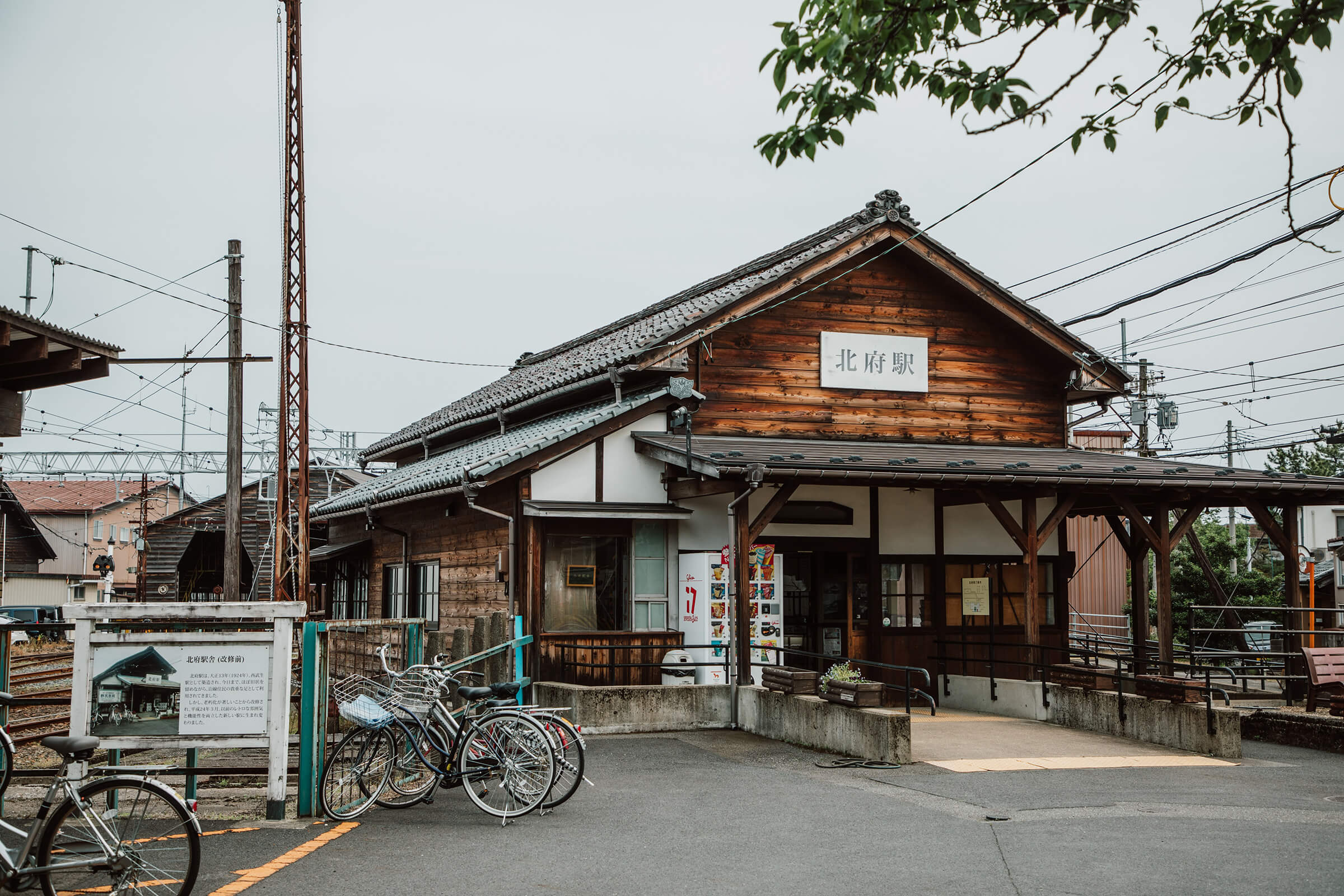
They first came to Fukui Railway's “Kitago” station.The station's name, “Kitago”, derives from its location to the north of the former Echizen *kokufu.The station building, which retains the retro atmosphere of the Taisho era, has also been the subject of a cell phone commercial.The station is unmanned, which is rare nowadays, and inside the station building is a museum with about 120 valuable materials of Fukui Railways on display.
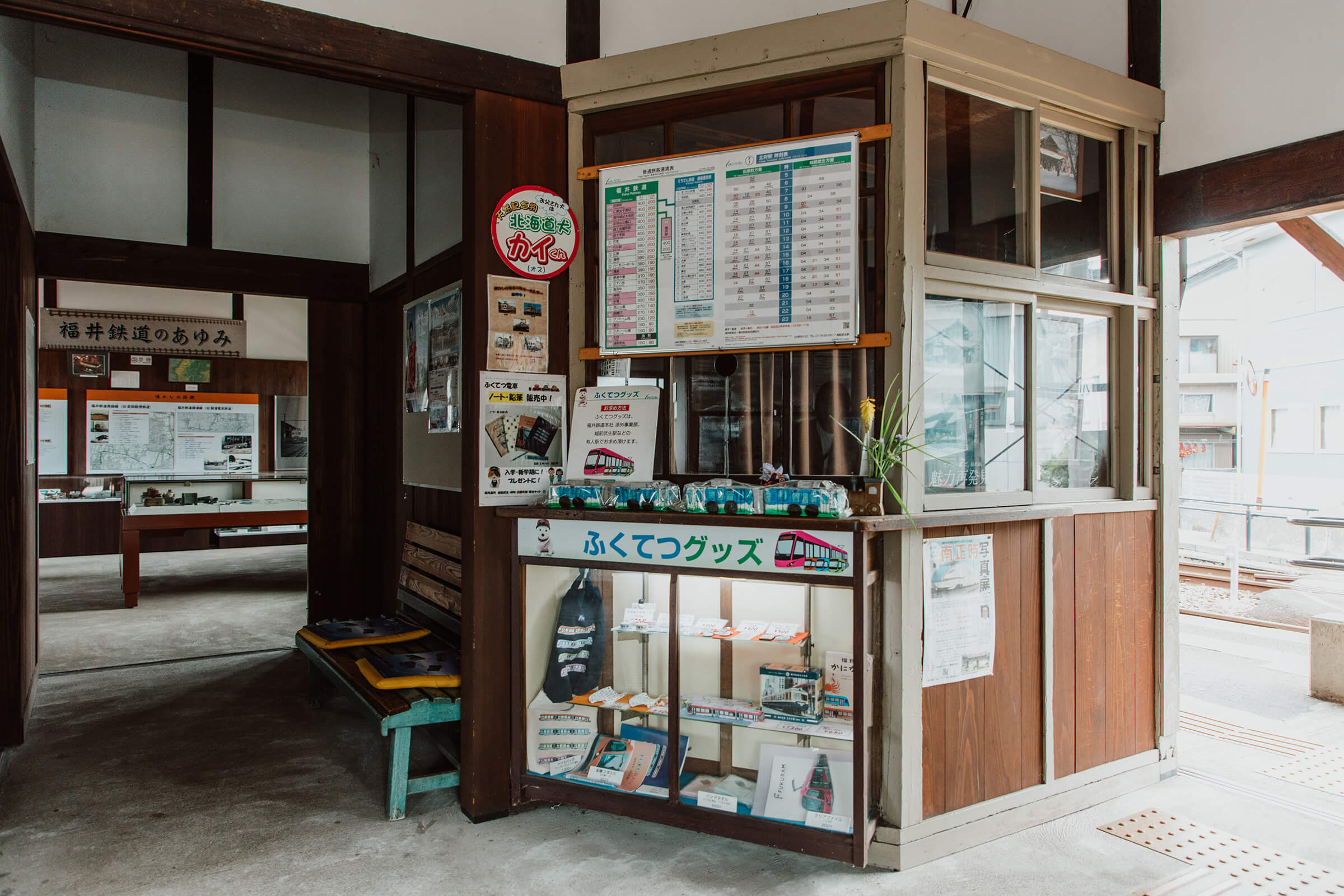
The area around the ticket gate and the waiting room are also tasteful, retaining the atmosphere of the old days.In 2013, the station building was also designated as a National Tangible Cultural Property.
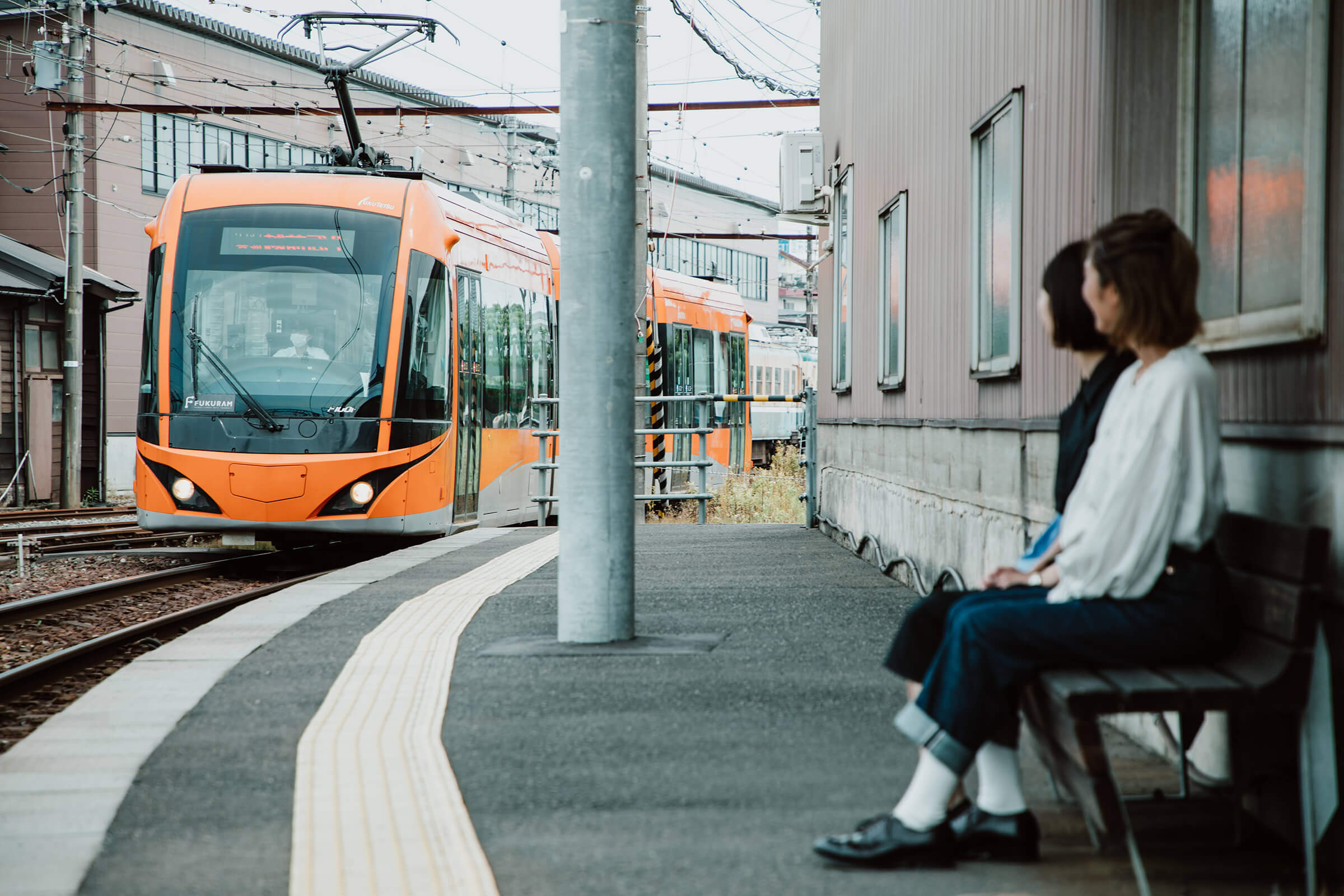
Two cute train cars came to the station.The bright orange color of the train, nicknamed “FUKURAM,” the bright orange color evokes a cheerful color that dispels the winter in Hokuriku.
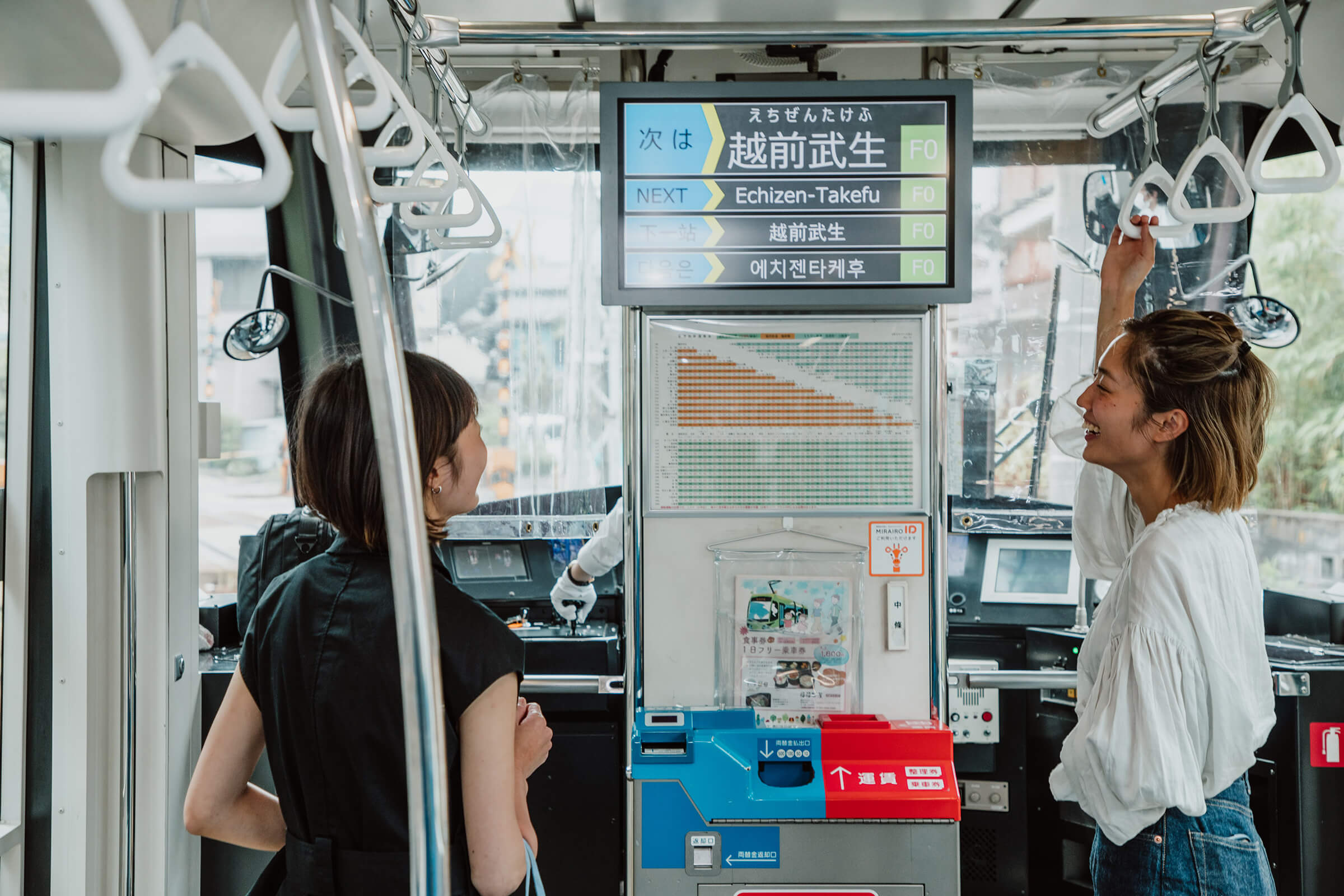
The Fukui Railway, which moves slowly one station at a time, is an important means of transportation for local residents to commute to school and work.
If you use this service, you may be able to get a little taste of local life.
“It's a different kind of good than a car.”
“It would be fun to travel by train from the first to the last stop without worrying about the time,” They are already excited.
*kokufu:In the old days, the office of the provincial governor was located in each country.
We have arrived at our destination, “Echizen Takefu” station.
From here, it's finally time to get around Echizen City, and a flat-rate taxi is definitely the way to go.
If you purchase a boarding pass in advance, you can ride anywhere in Echizen City's major sightseeing facilities for 500 yen per trip.
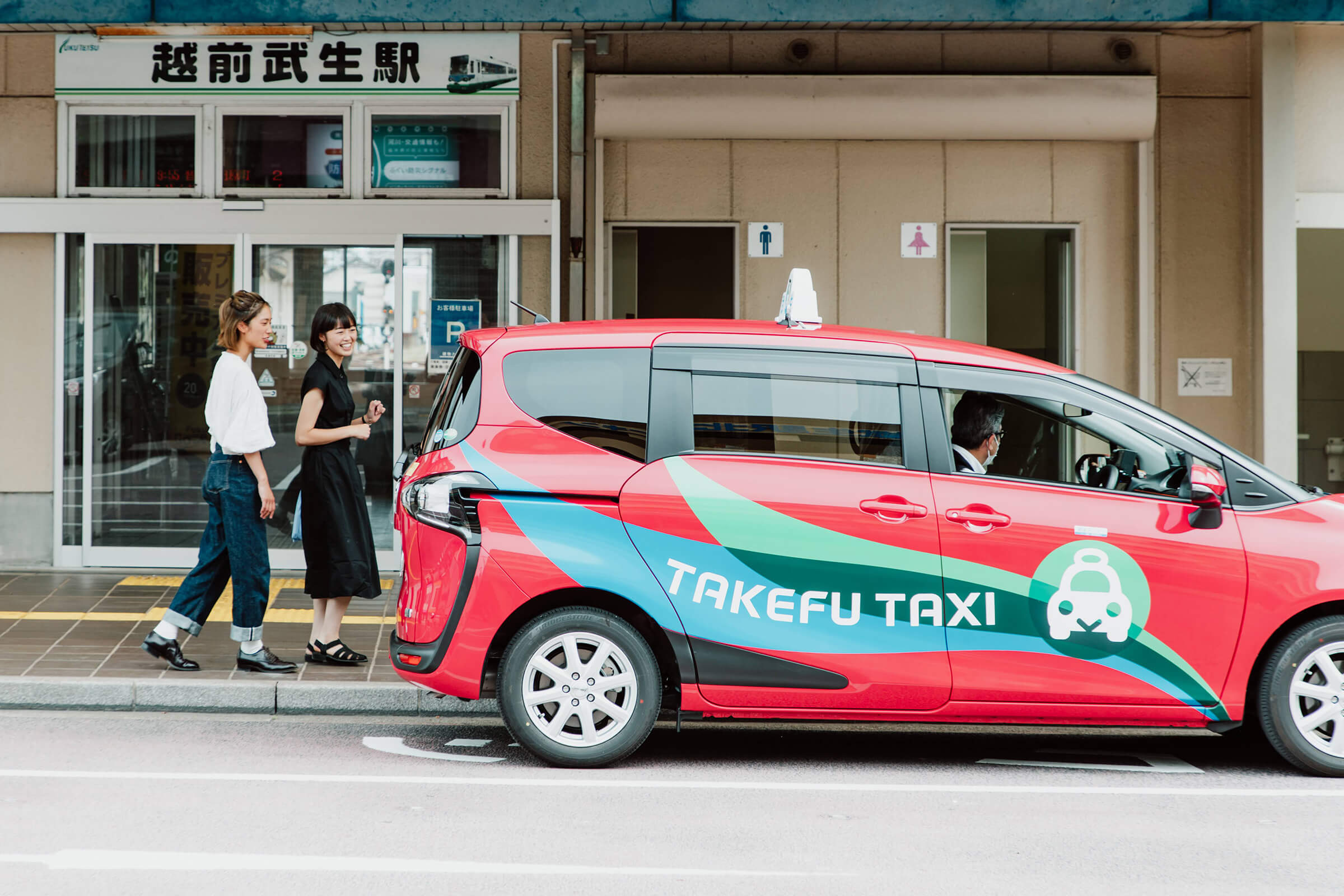
As we exited the ticket gate, we were met by an unusual pink cab.
This cab, the only one in the city, is commonly known as “the cab that brings happiness."
If you are lucky enough to get on board, lucky things may or may not happen.
So, let's get in a cab and head to our next destination.

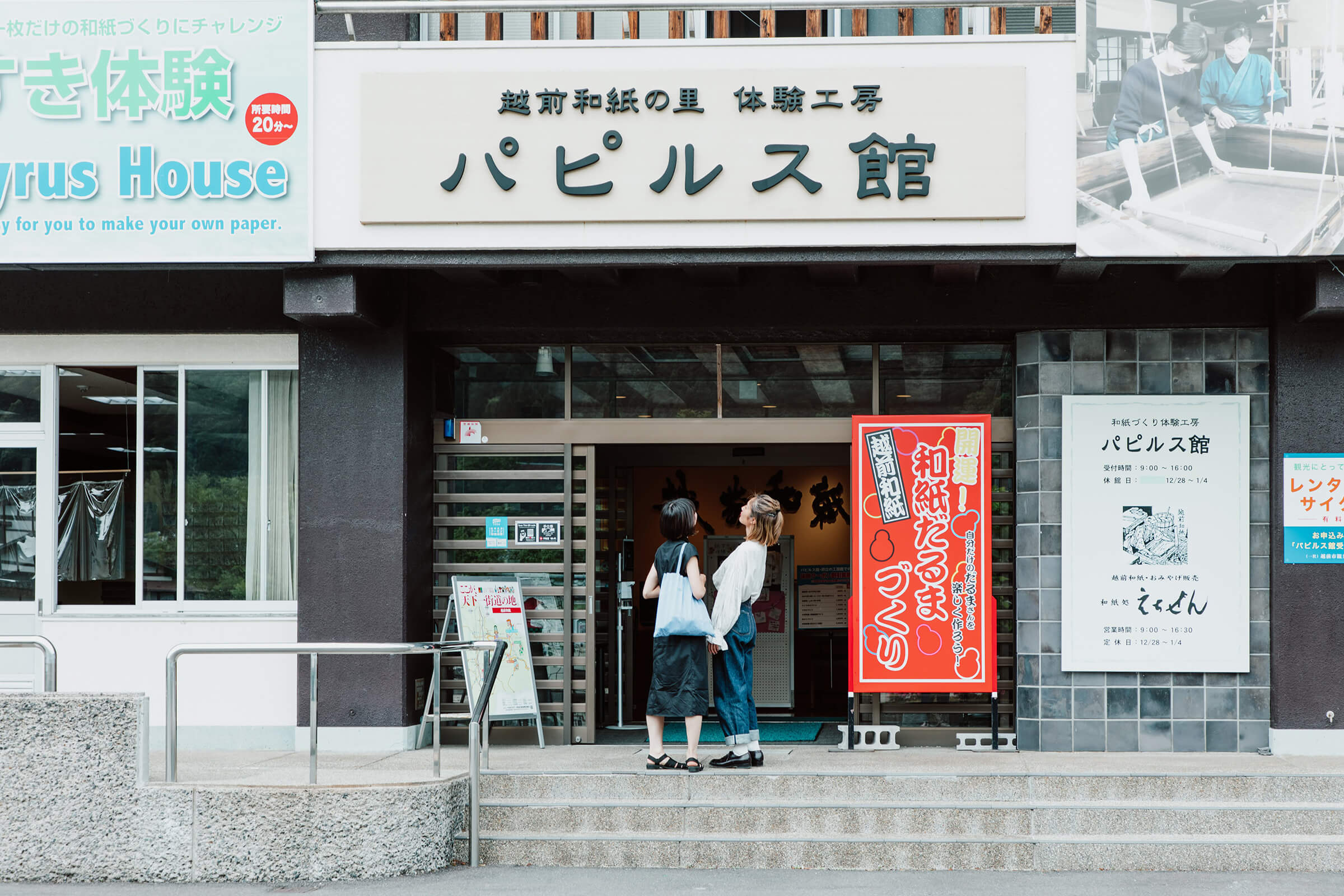
Next they came to the Echizen Washi no Sato “Papyrus-kan”, located about 15 minutes by car from JR Takefu Station and Echizen Takefu Station.
Echizen Washi is one of the traditional crafts handed down from generation to generation in Echizen City.At the Papyrus Center, visitors can try their hand at papermaking and make their own unique sheet of washi.

It was the first time for both of them to make paper."I've always wanted to try it,” they said happily.
At the Papyrus Center, they will try their hand at making their own ema (votive picture tablet) using Echizen washi paper.
The staff will teach you how to make paper.
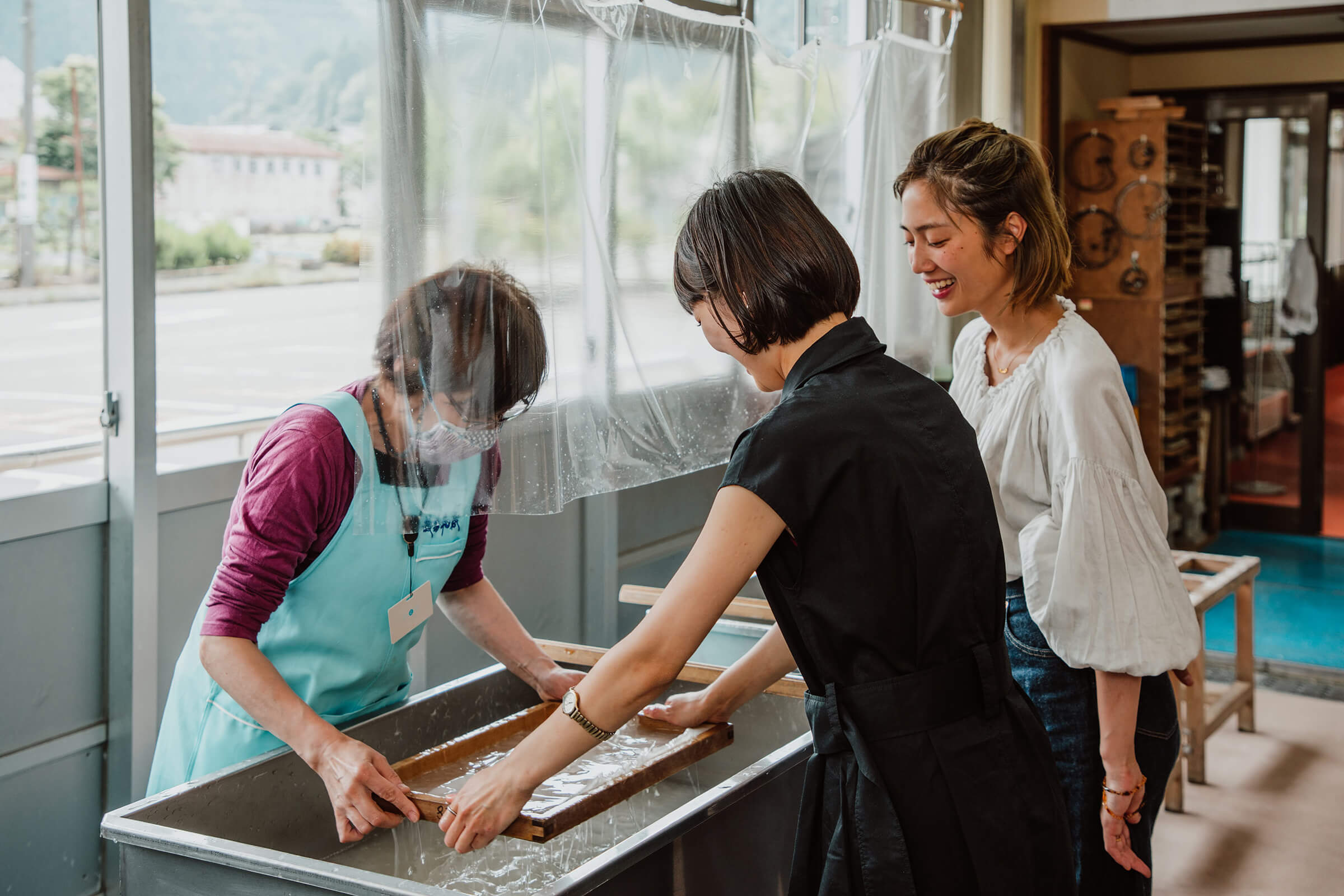
The fibers of a plant called “kozo” (mulberry) are mixed with a highly viscous plant that acts as an adhesive, and the mixture is then scooped into a wooden frame called a “keta".
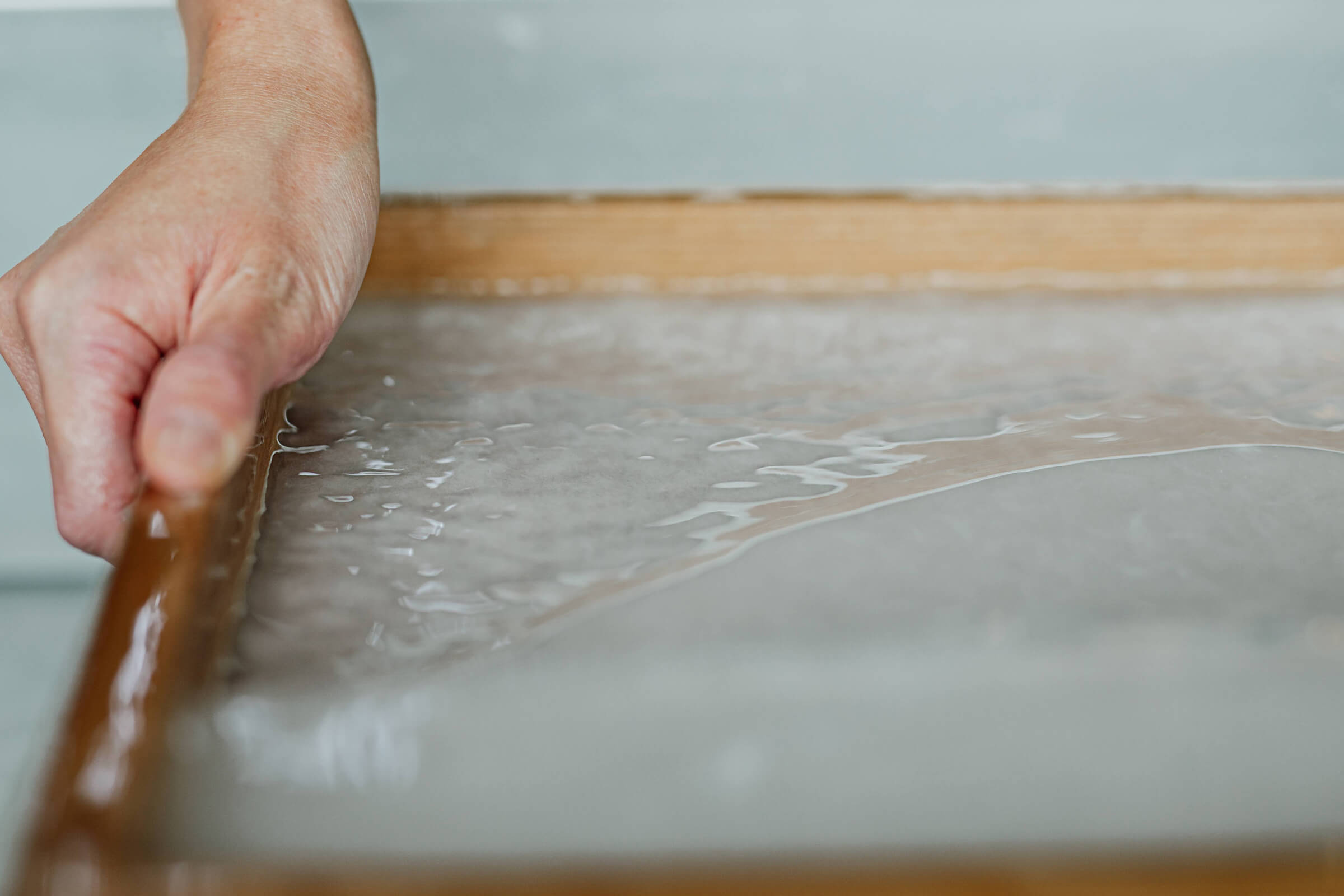
Shake the girders vertically or horizontally:The trick is to swing them in such a way that the fibers are entangled.
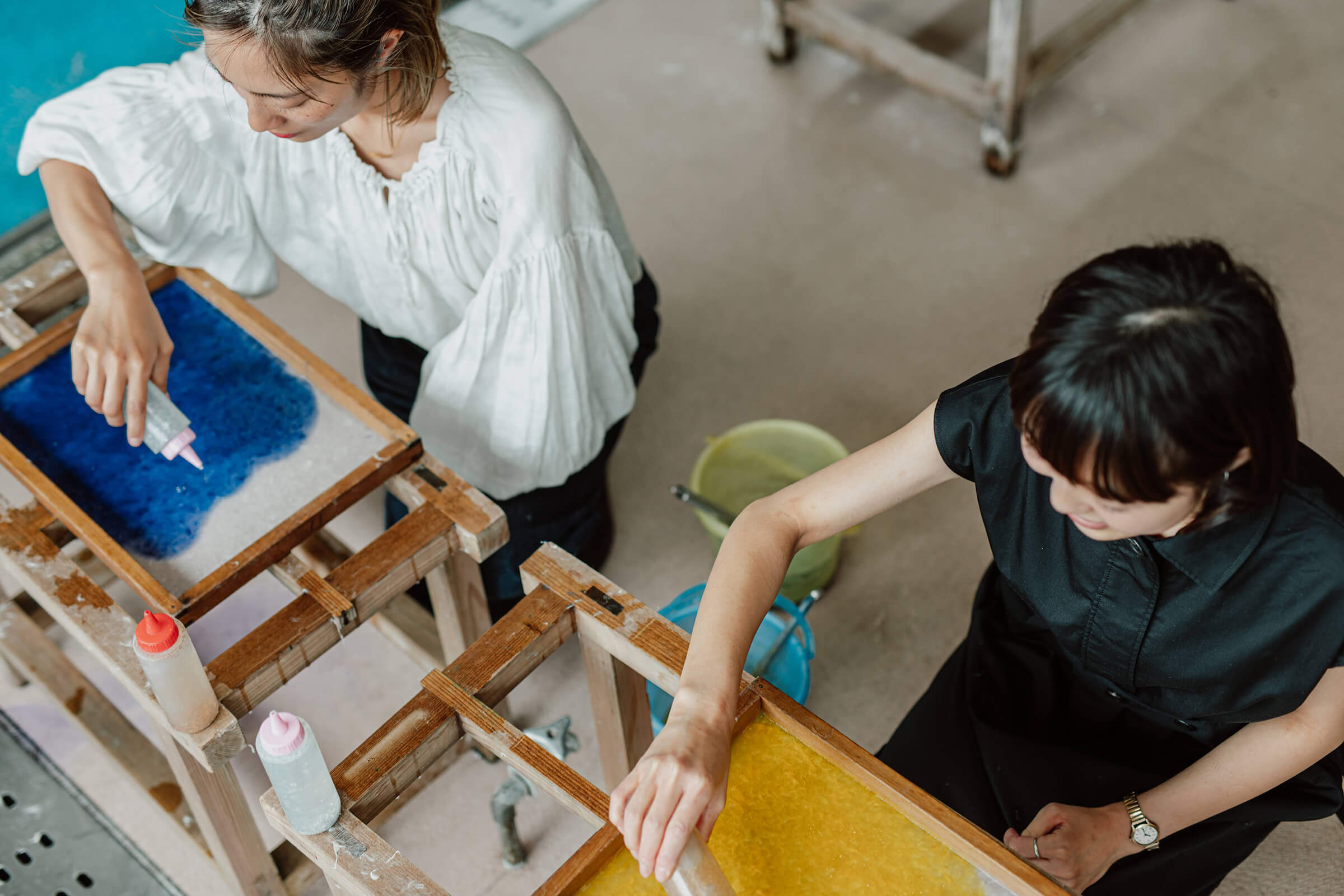
Colors are added to the paper after it is made.
Reina chose a blue color reminiscent of the night sky, and Aya chose a bright yellow.
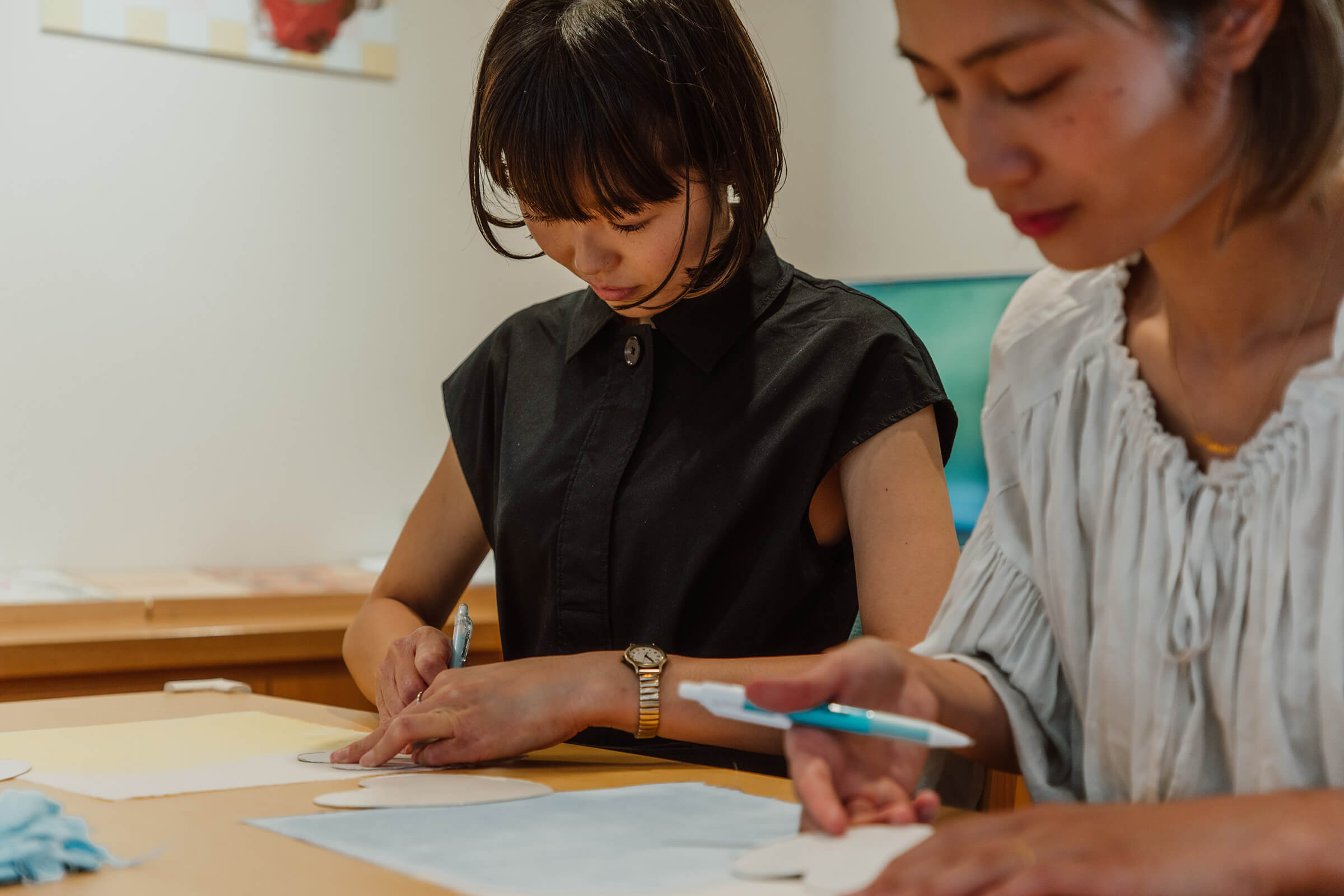
After coloring, the washi is quickly completed when placed in the dryer.
From here, they are cut out by hand in the shape of an ema.
Washi is a strong paper, and it seems to take more strength to cut it out than expected.
They both look serious.
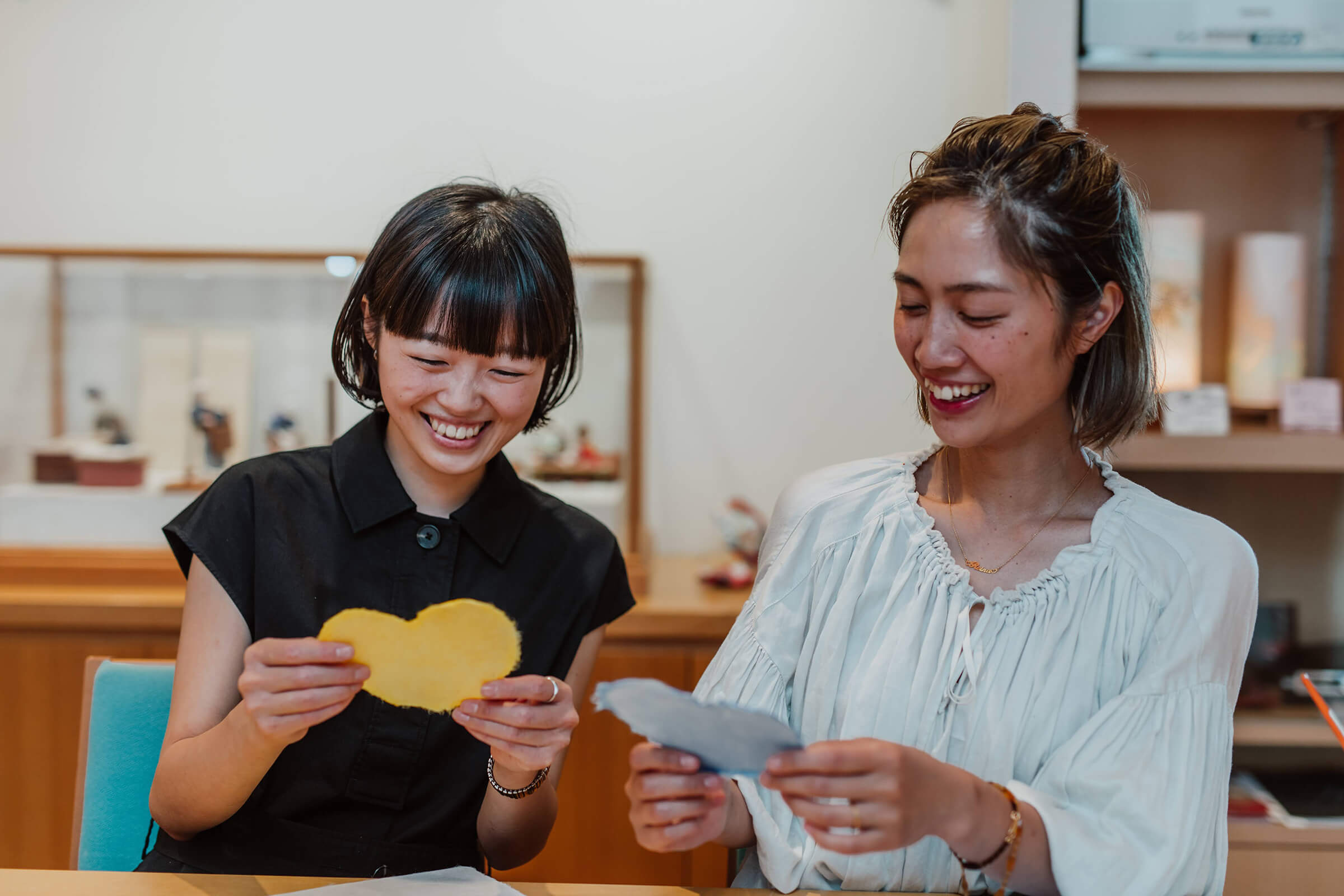
The ema (votive tablet) is said to be in the form of an “inome,” which is a beast's eye power to ward off evil.When Fluffy washi paper is pasted on the seemingly heart-shaped ema, the result is quite lovely.The last step is to write your wish and complete the process.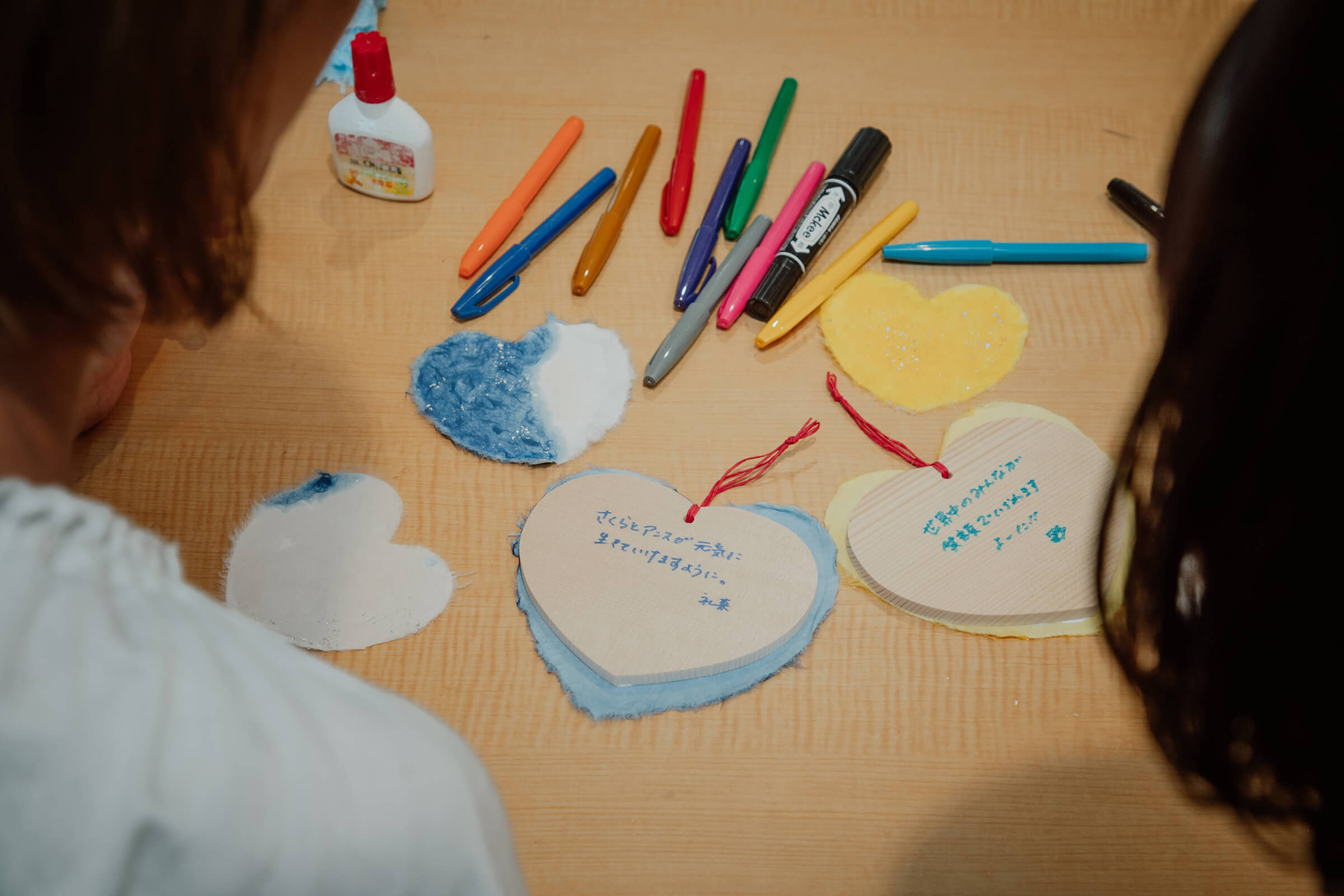
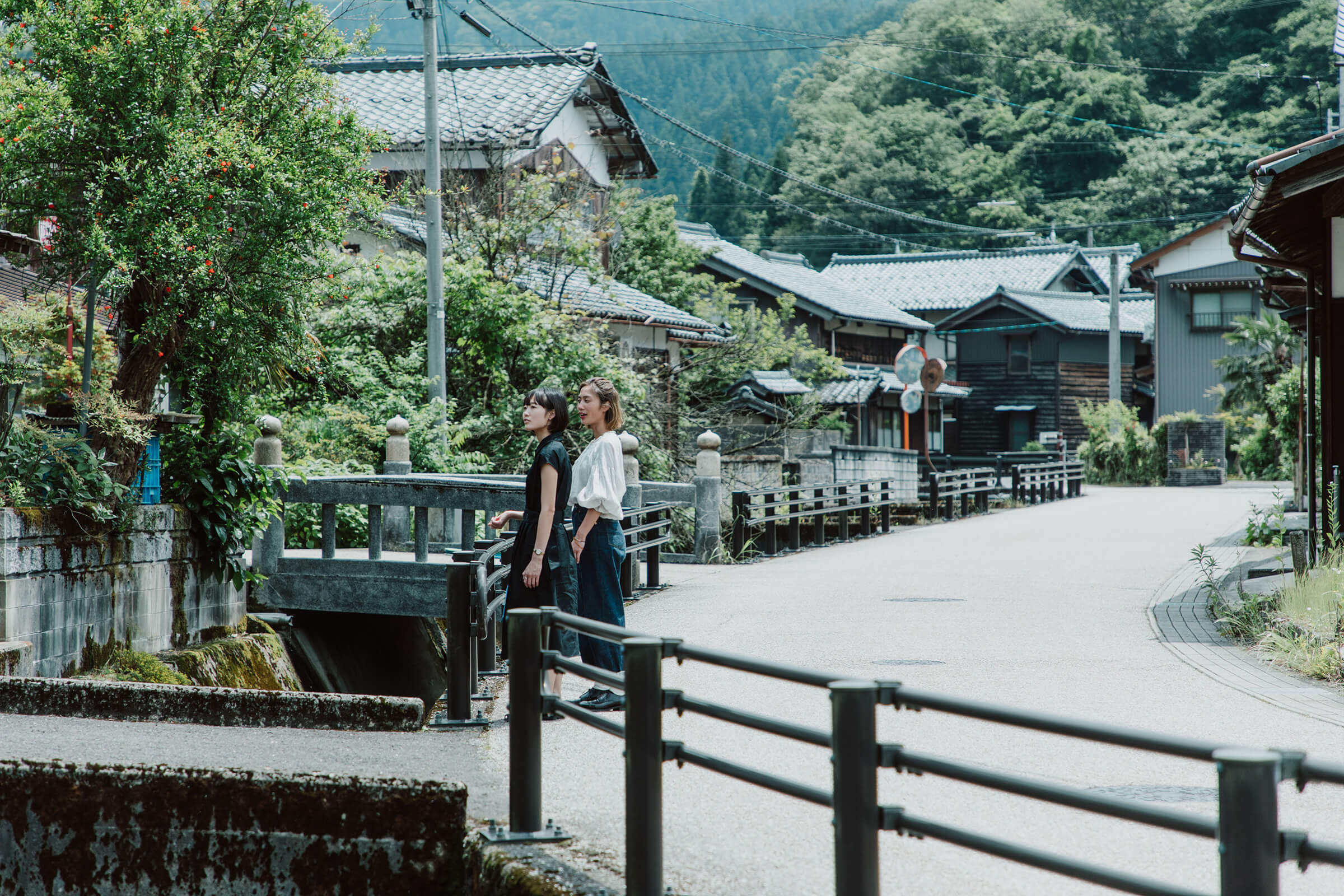
With the ema, they made in their hands, they took a stroll through the village of washi.
The Goka district, consisting of the towns of Otaki, Iwamoto, Oizu, Sadatomo, and Shinzaike, is home to many washi papermakers, especially along the Okamoto River that runs through the town.
The elegant streets lined with traditional Japanese houses are perfect for a leisurely stroll.
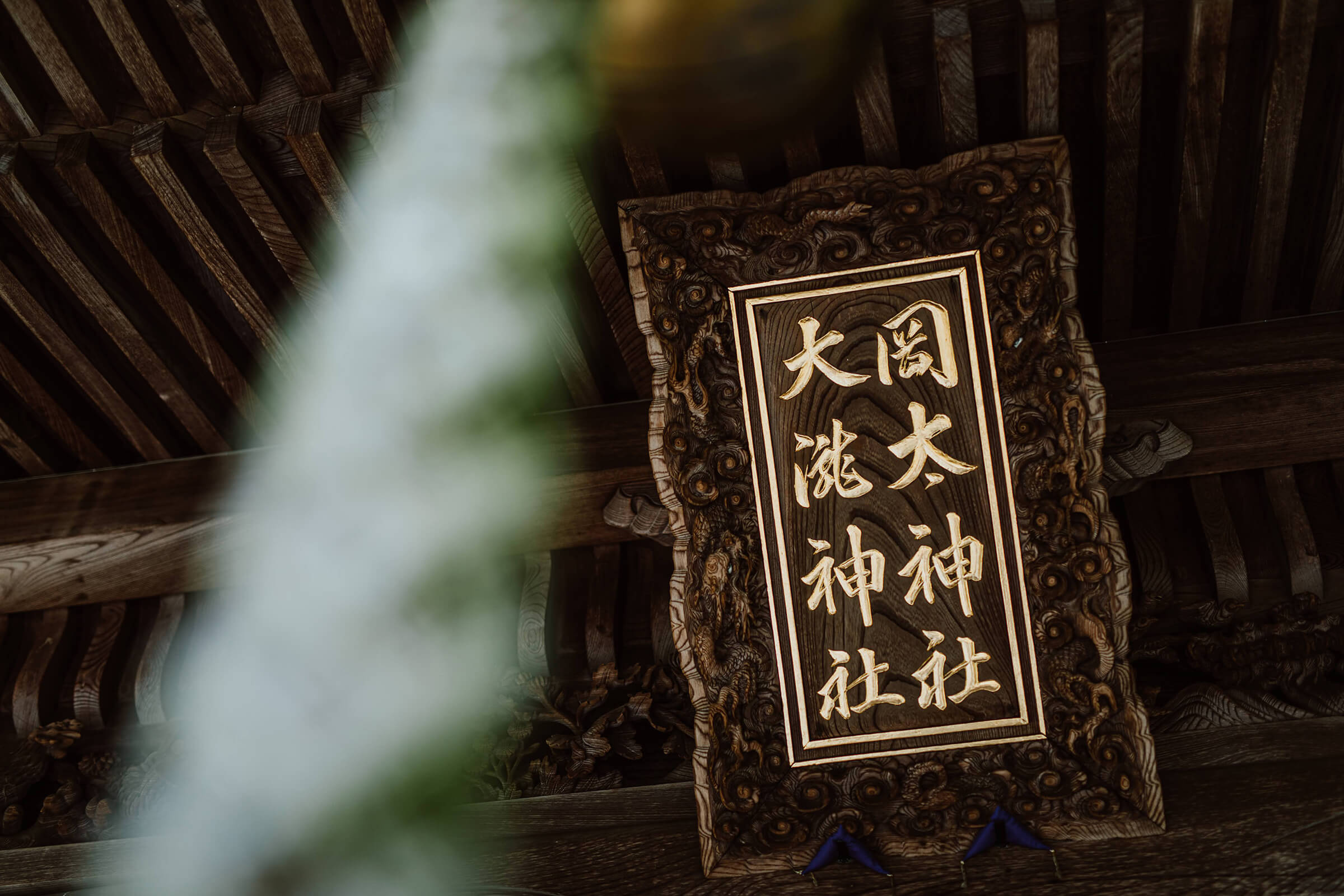
After a 15-minute walk from Papyrus Center, we arrived at Okamoto Otaki Shrine.This shrine, which is said to be an essential part of the history of Echizen washi, enshrines the goddess of paper.
About 1,500 years ago, a beautiful princess appeared in the upper reaches of the Okamoto River and taught the villagers for papermaking, and saying, “If you use the pure river water of this village and make paper for a living, your lives will be enriched."
This is believed to be the birthplace of Echizen washi, and since then, this princess has been worshipped as “Kawakamigozen,” the goddess of paper.
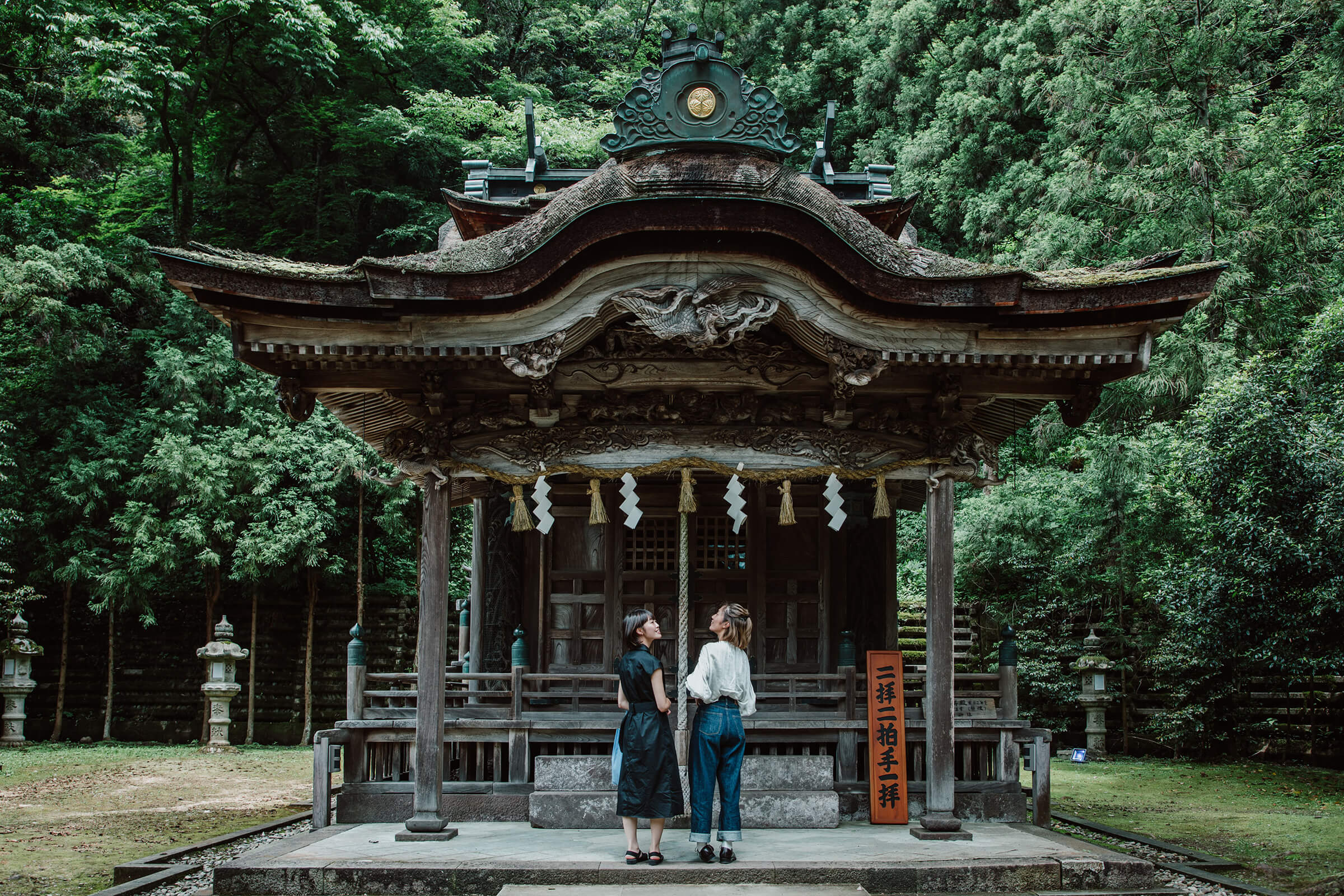
As soon as we stepped into the temple grounds, a dignified atmosphere flowed through the air.The sacred atmosphere made both of us stand up straight.
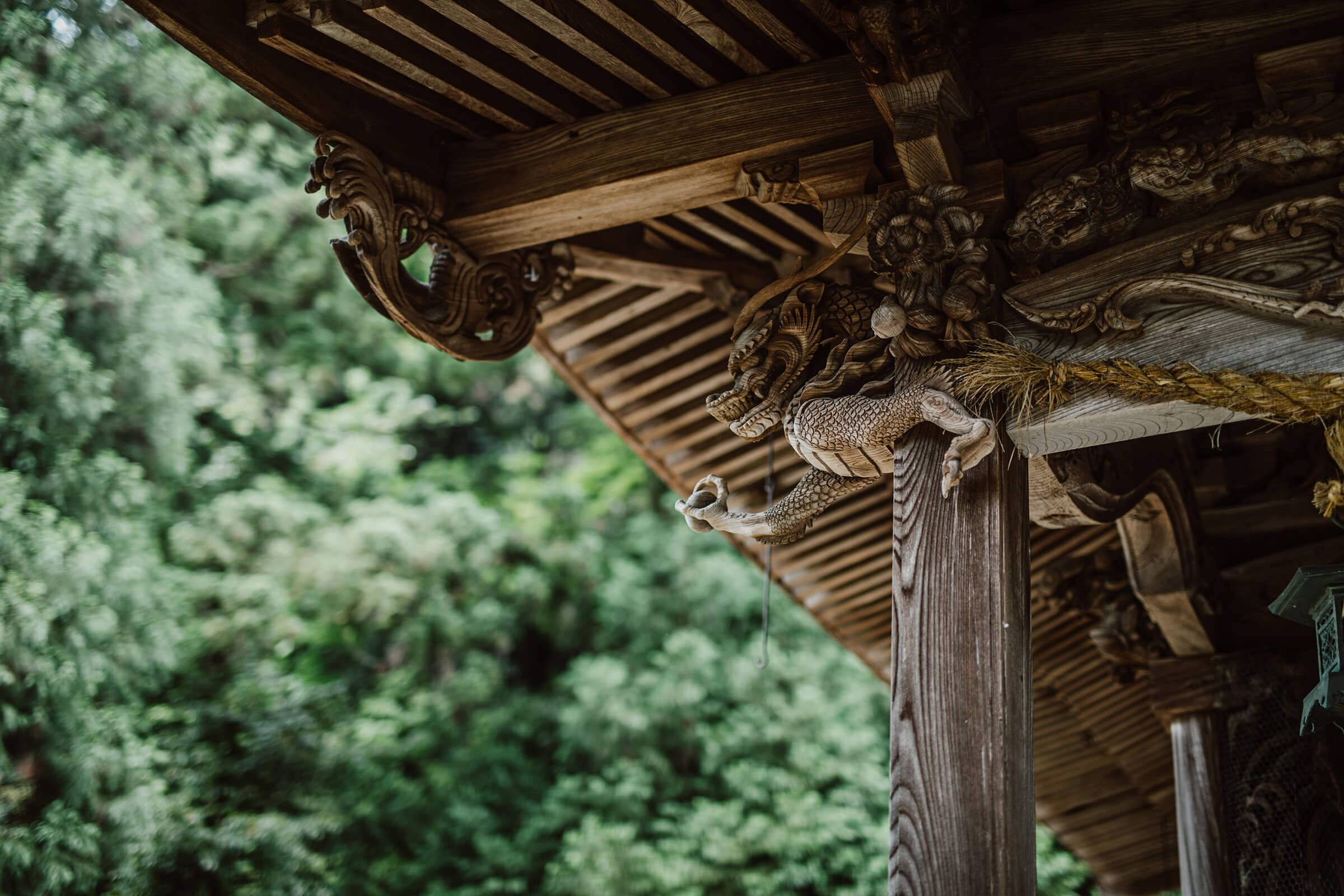
The intricate carvings on the shrine pavilion were made by Kanzaemon Okubo, the temple carpenter who created the Imperial Gate of Eiheiji, a famous temple in Fukui Prefecture.
It has an appearance that makes you want to lose track of time and stare intently at it.
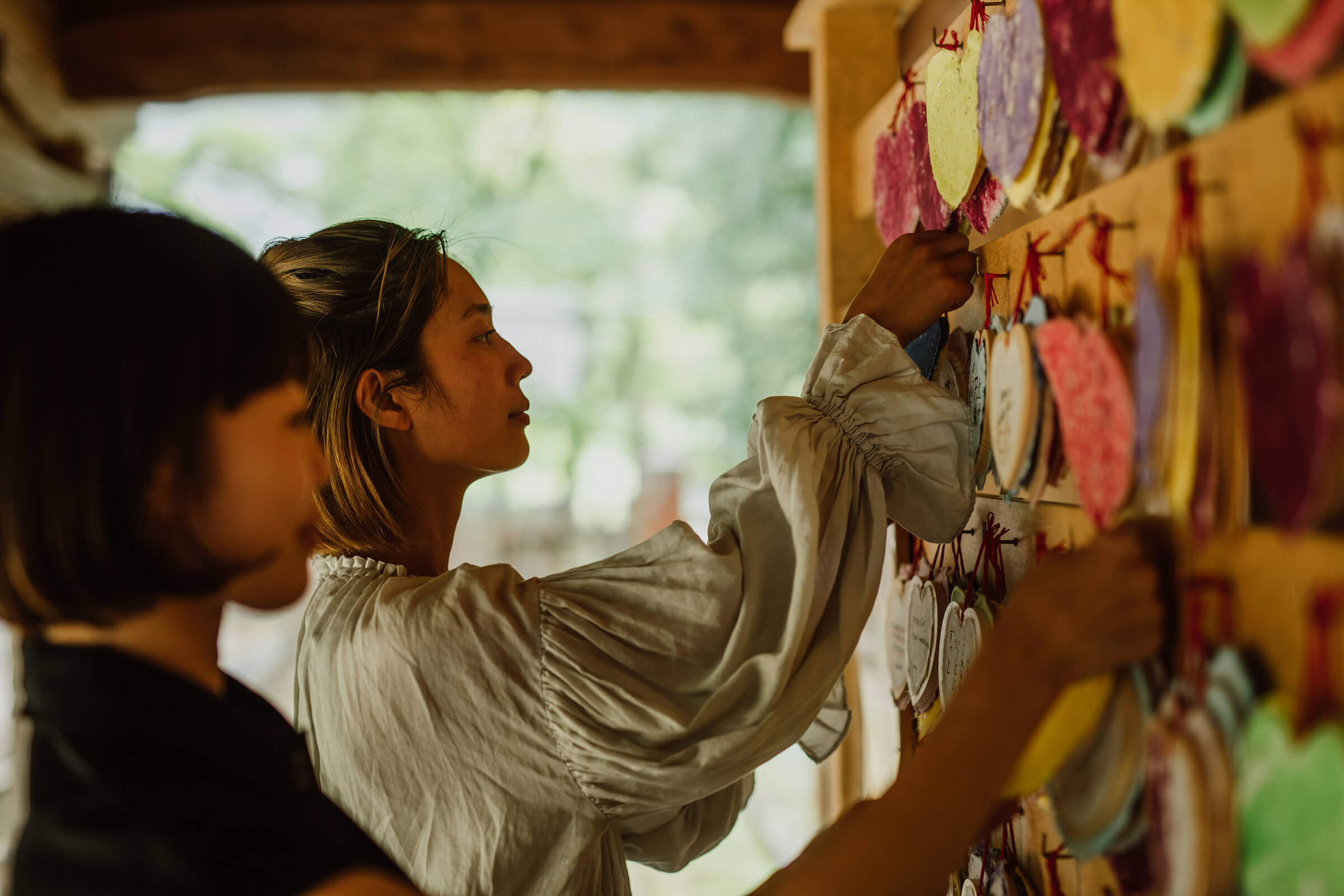
The ema you have just made is dedicated to an ema hanging in the shrine's precincts.
Reina says, “I am thrilled to be able to experience the traditional craftsmanship of Echizen washi in this sacred place."
Aya was also full of emotion, saying, “Knowing the roots of washi paper made my memories even deeper.”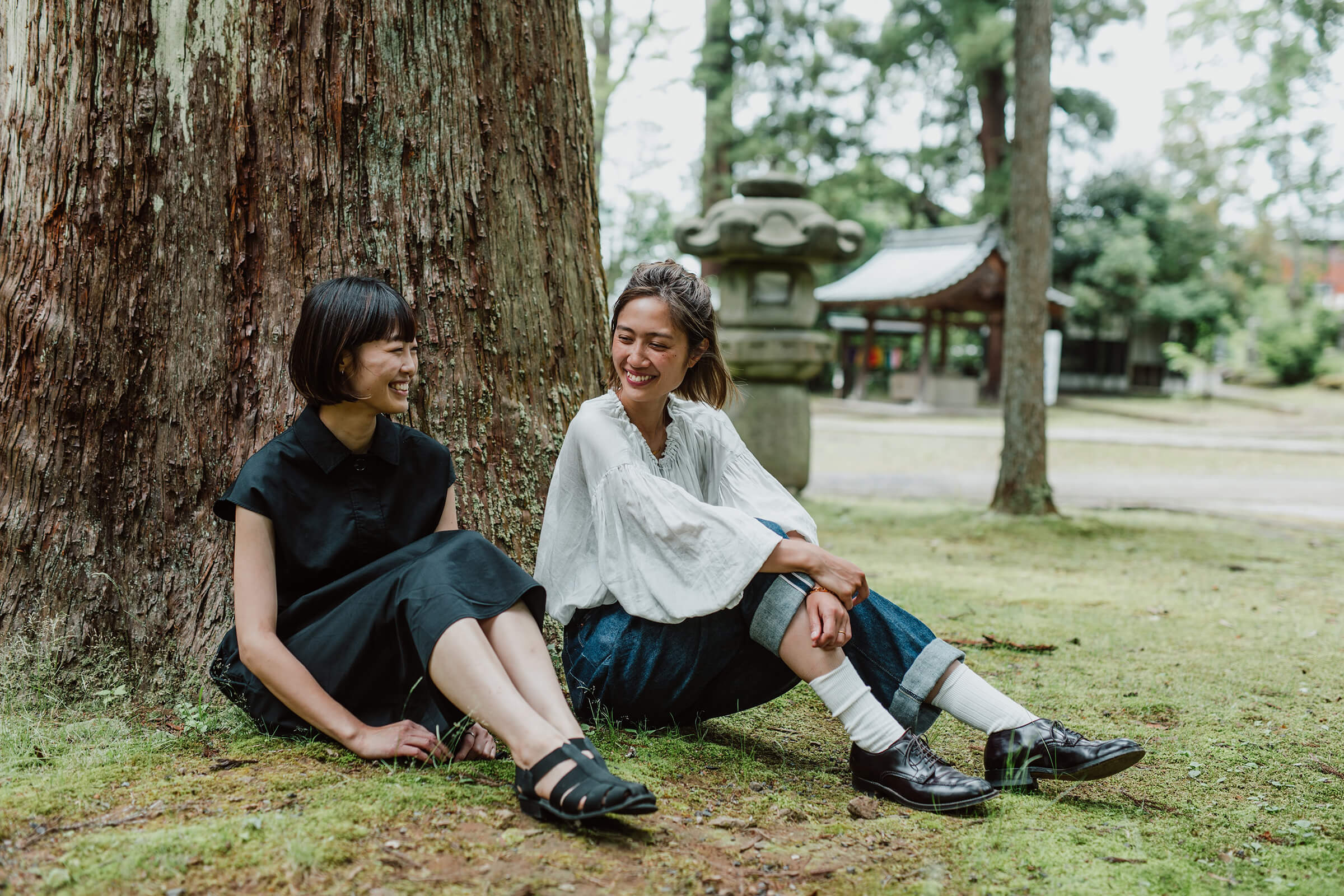
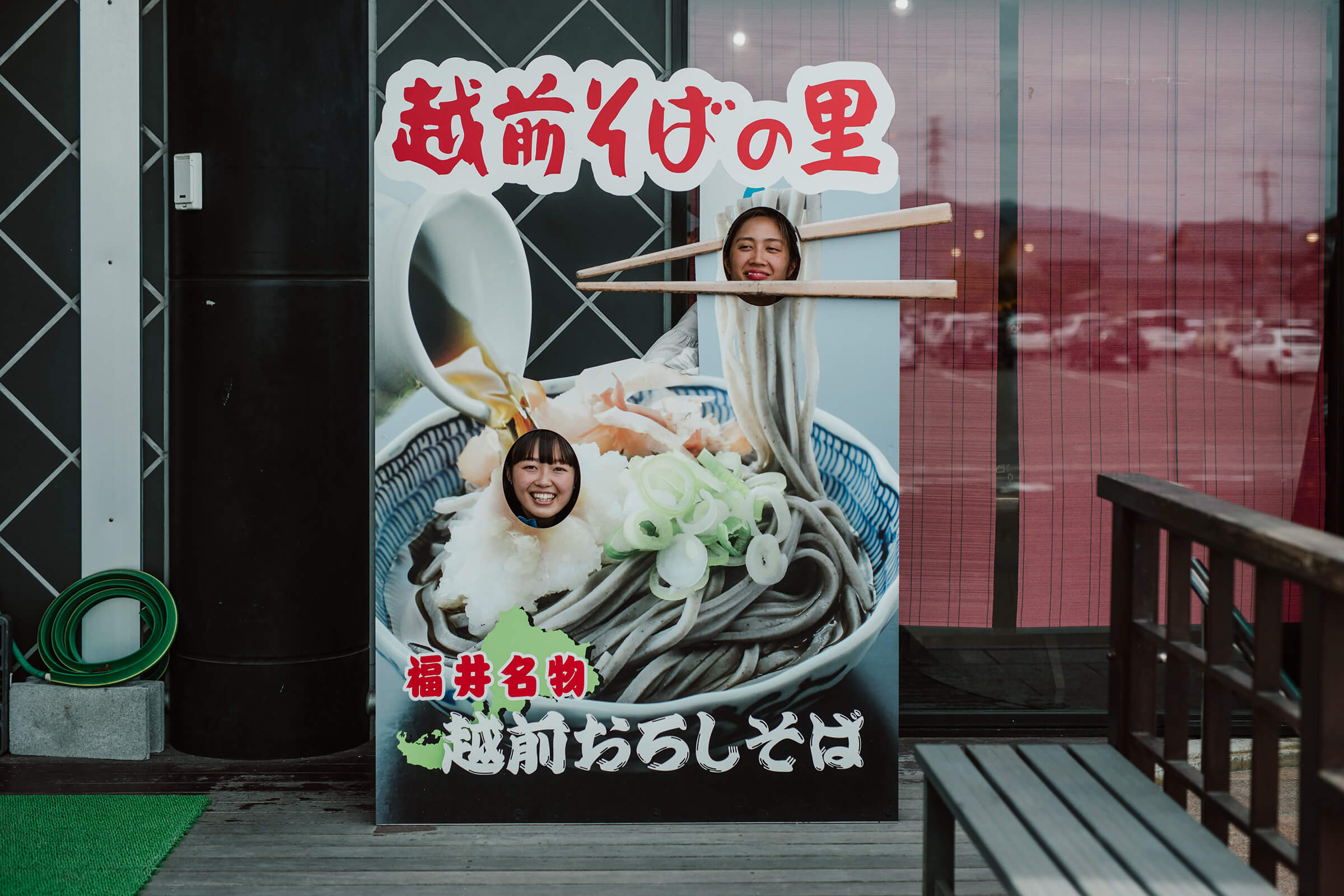
Ta-da!Next they came to “Echizen Soba-no Sato,” a 3-minute drive from the Takefu IC on the Hokuriku Expressway.Here, visitors can enjoy Echizen soba in its entirety, including not only meals, but also a tour of the soba factory and a soba making experience.
The spacious hands-on workshop offers a “soba-noodle making experience” where both children and adults can make authentic Echizen grated buckwheat noodles.
“I've always wanted to make soba because I dream of opening a soba shop in the countryside someday.” says Aya.The two of us will try soba noodle making for the first time.
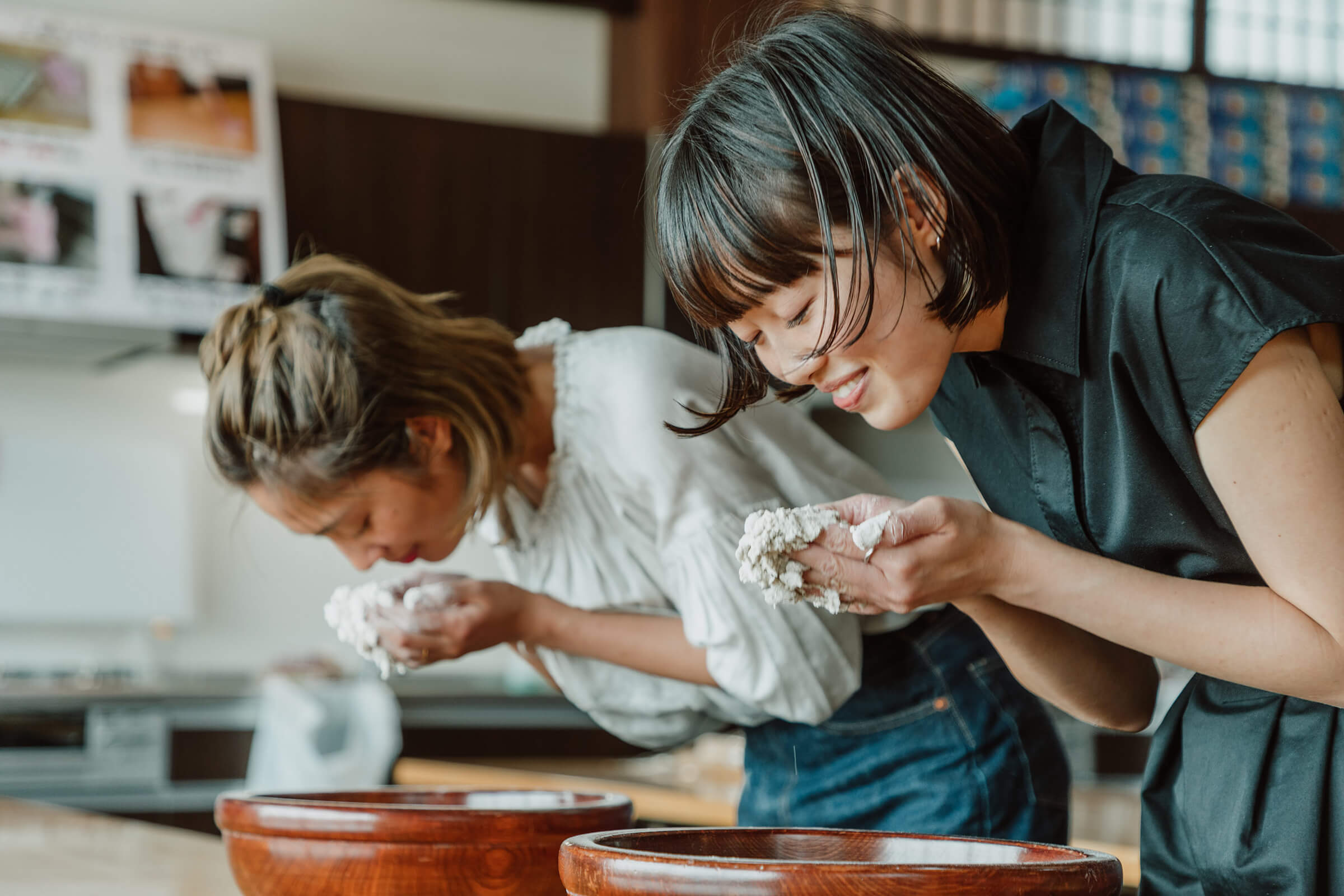
First, water is added to the buckwheat flour, a process called "mizu-mawashi." "Echizen Soba-no-Sato" grows buckwheat seeds on its own farm.They enjoy the fresh aroma, saying, "Buckwheat has such a nice smell."
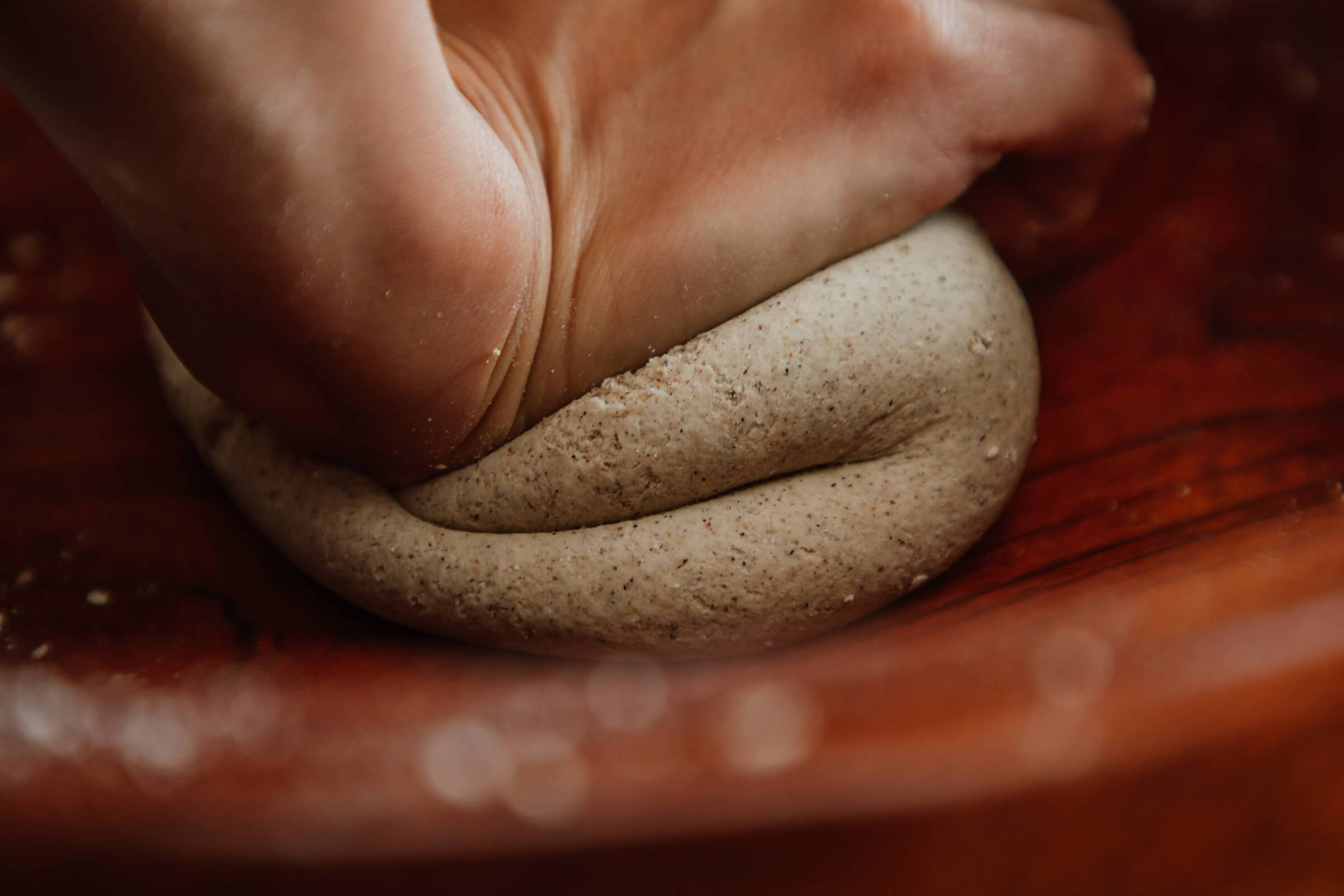
Buckwheat flour oxidizes from the moment it is taken out of the bag, so kneading it quickly is the secret to a delicious result.Reina, who makes bread on a regular basis, kneads the dough with familiarity.
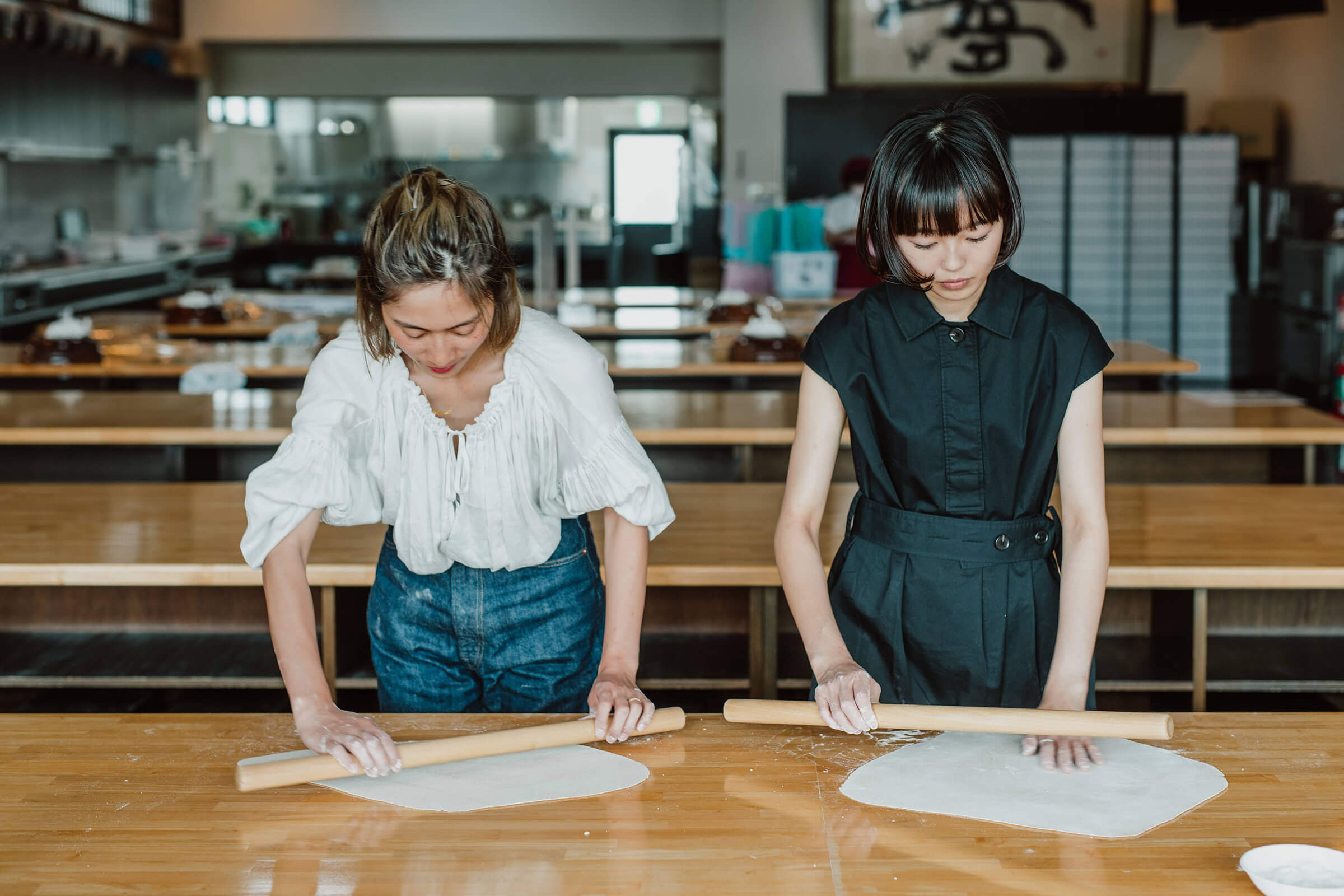
After kneading thoroughly, roll out the dough into an even square shape while rotating it.Aya's hobby is making dumplings.She also makes the crusts by hand, so she is a master at stretching dough.Stretch the dough into a beautiful rectangle.
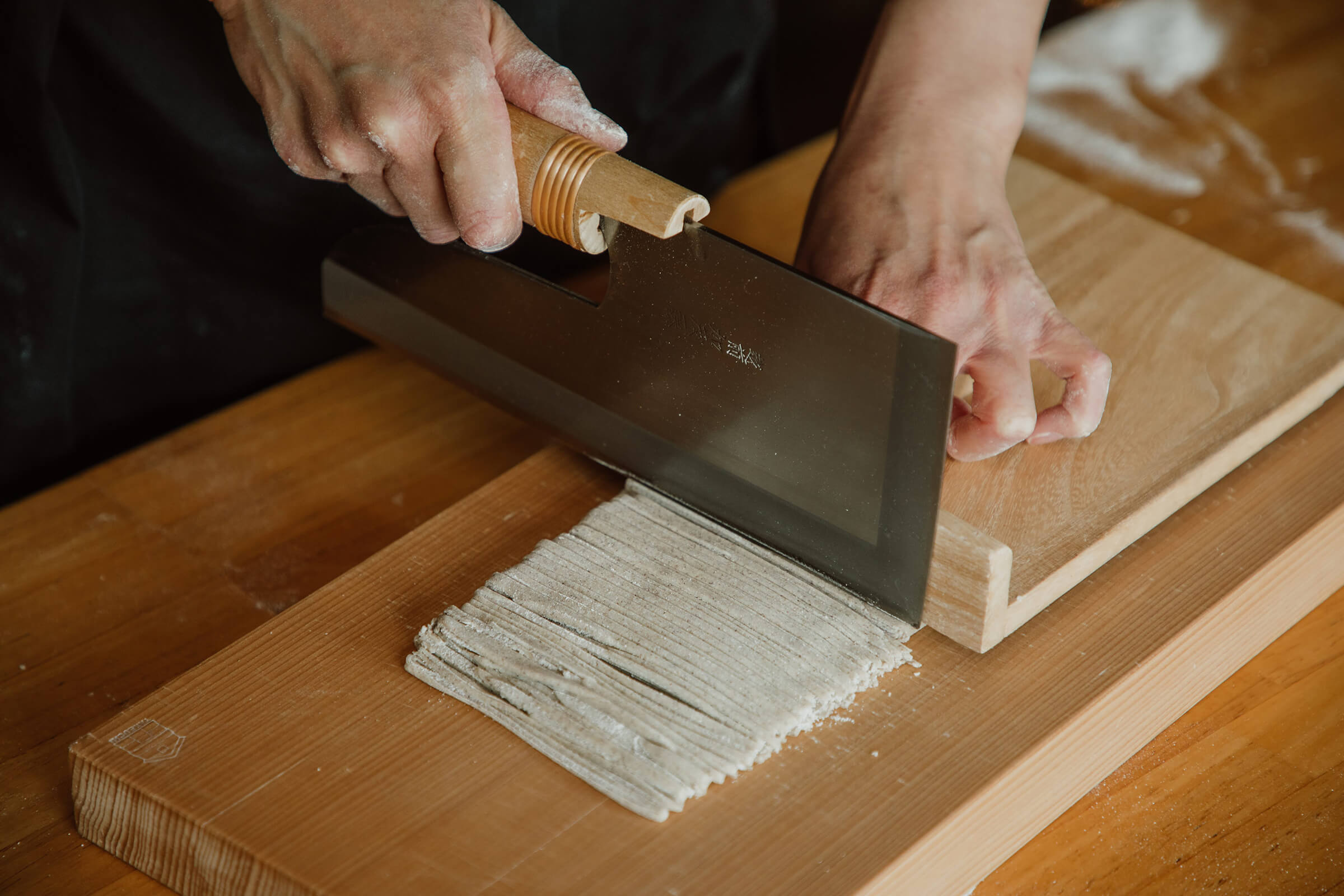
They carefully fold the evenly stretched dough and cut it with a soba knife.The knives are Echizen Uchihamono, a traditional craft made in this region.It is difficult to cut them to a certain thickness, but the good thing about hand-hammered blades is that they are uneven.
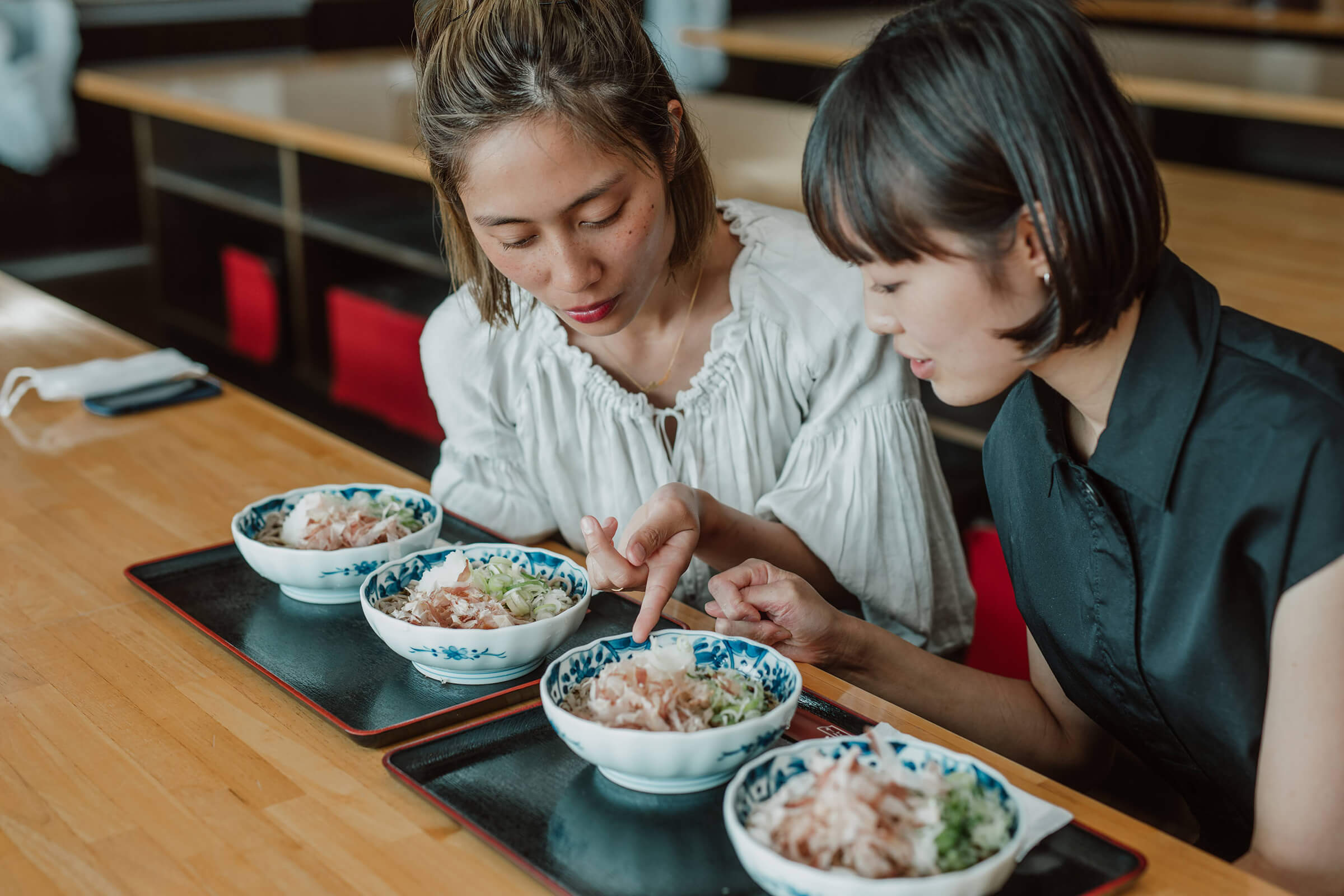
The soba noodles can be boiled on the spot and eaten as grated buckwheat noodles.The taste of our own buckwheat noodles is so special! They were completely hooked on the charm of soba-noodle making.
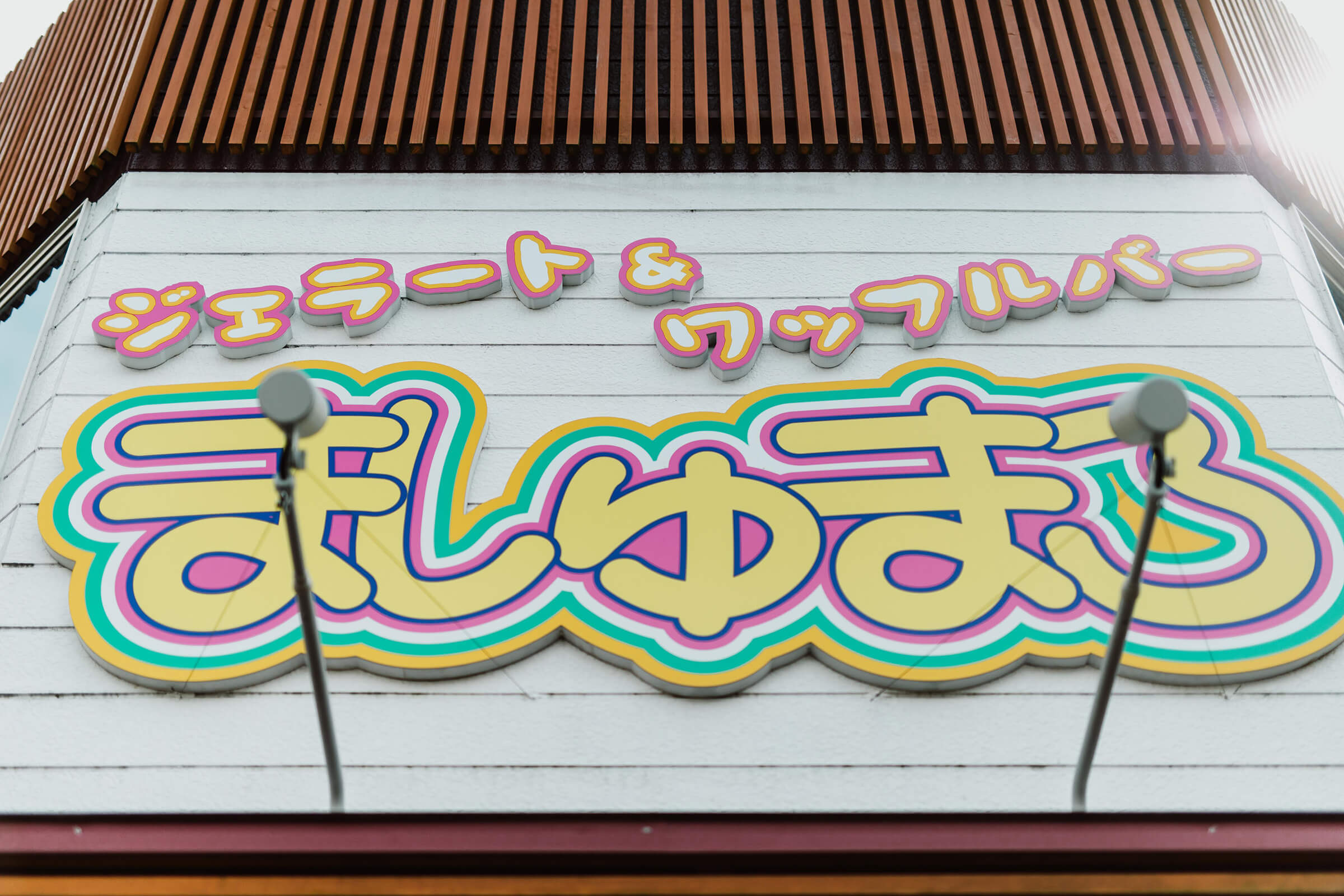
After eating handmade soba, it is time for a snack.Next we came to “Marshmallow” which opened in April 2021, about a five-minute walk from JR Takefu Station.
The owner's wish is to “let children and locals enjoy delicious food so that the town will not be lonely.” The store offers a variety of familiar dishes such as a waffle bar, gelato, and smoothies, as well as trendy drinks.
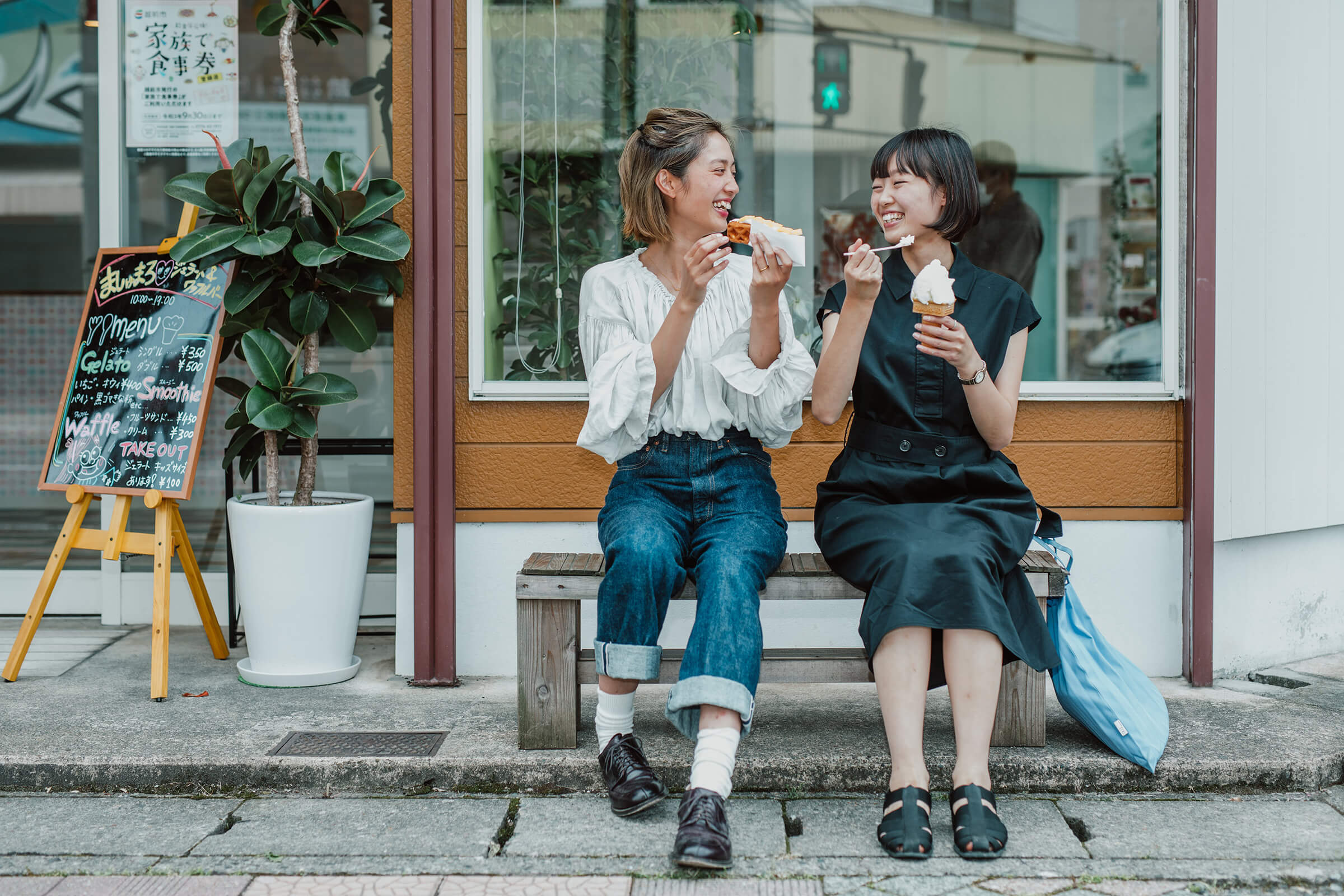
Reina ordered lemonade gelato and Aya ordered a yogurt cream x pineapple waffle.The menu items can be eaten with one hand, making them a perfect accompaniment for walking around town.
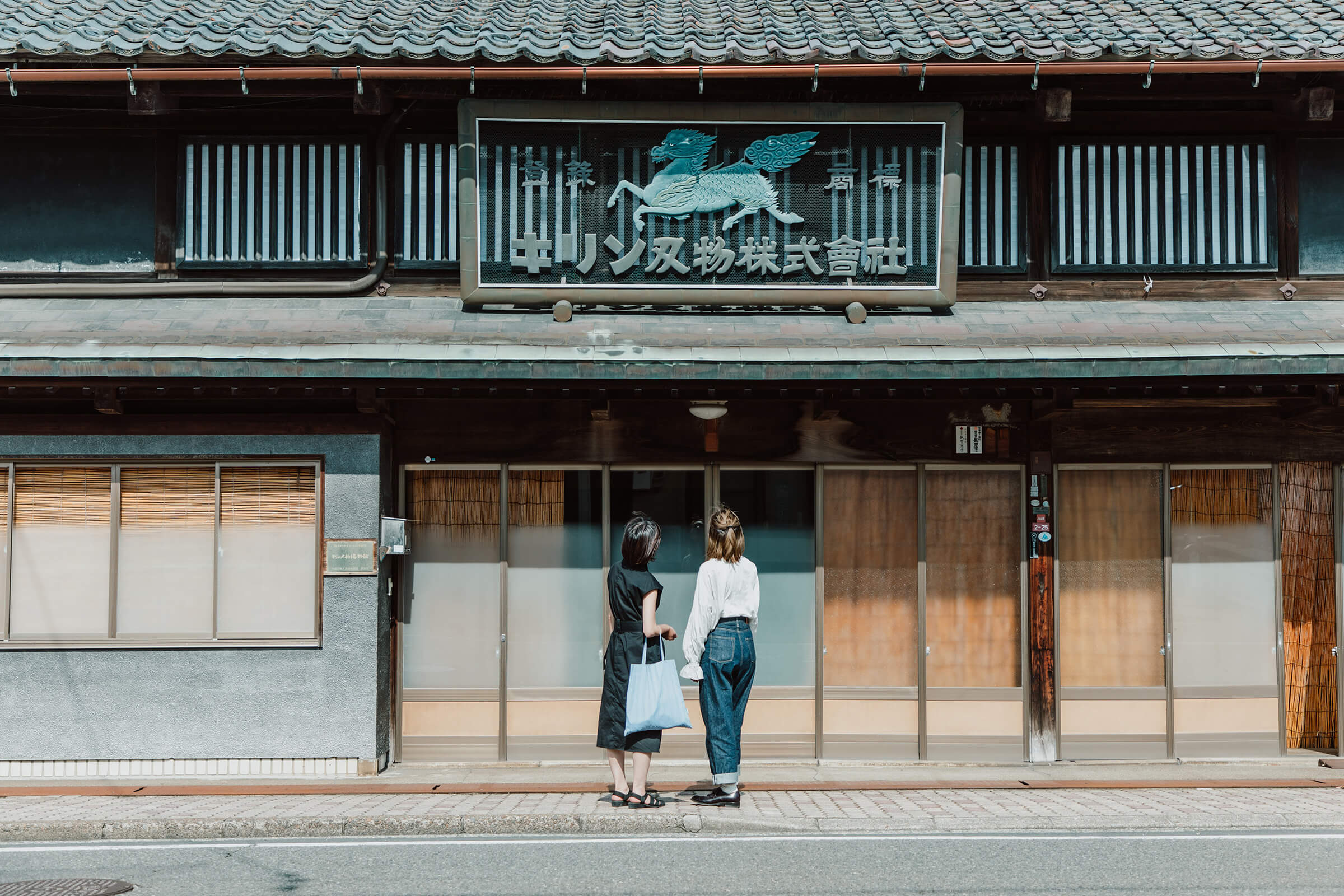
A five-minute walk from “Marshmallow” brings us to “Tansu-machi Street.” This 200-meter-long street hosts over a dozen Japanese and Western furniture merchants.
Echizen tansu, a craft nurtured since the late Edo period, was designated a traditional craft in 2013, following Echizen hammered blades and washi paper.Made from zelkova or kiri wood,it features unique *sashimono techniques, iron fittings, and lacquer coating.
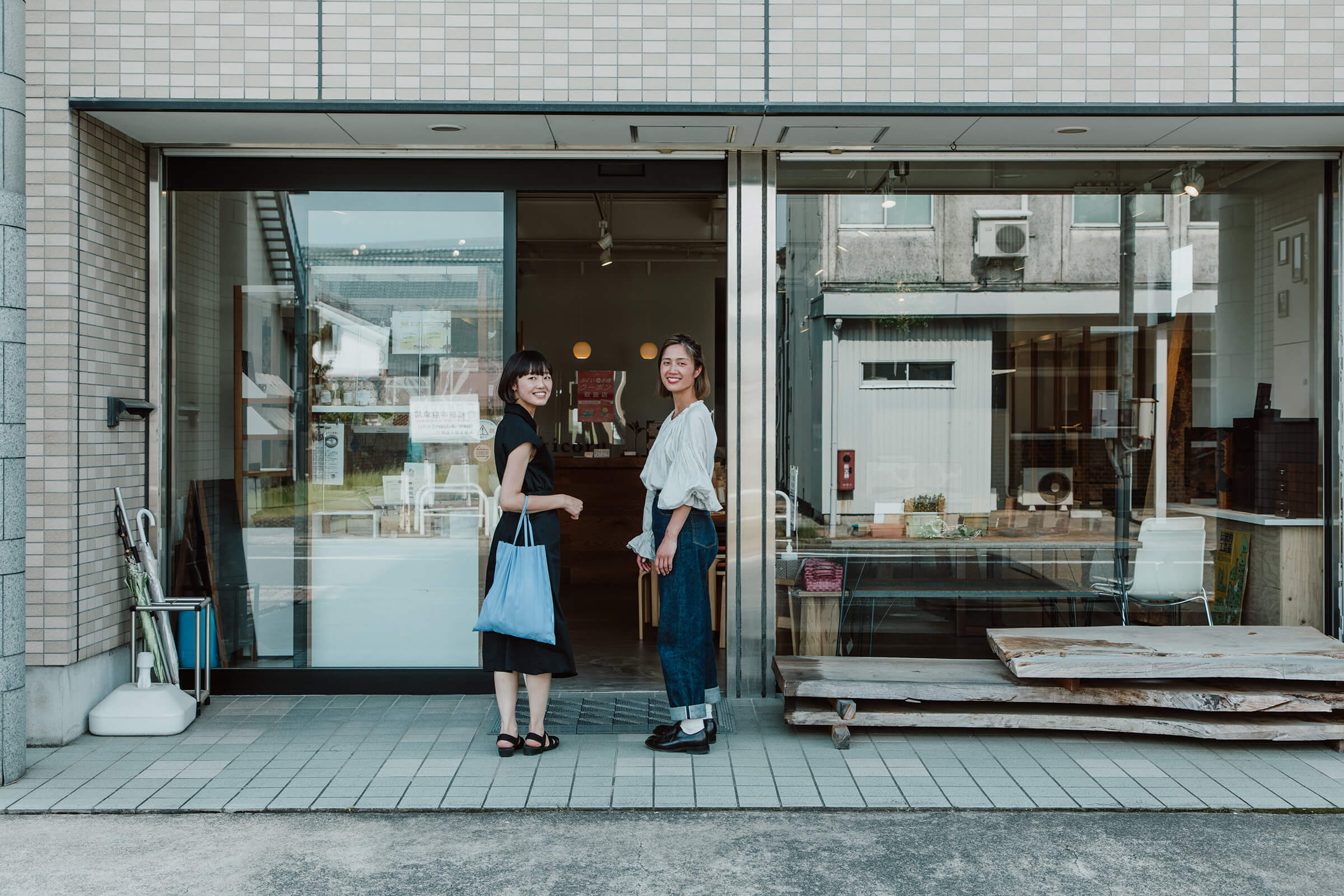
Lastly, we came to “kicoru” on Tansu-machi Street.Opened in 2014 by Oyanagi Tansu, a century-old Echizen tansu store, the atelier offers custom furniture, designer collaborations, and workshops using traditional techniques.
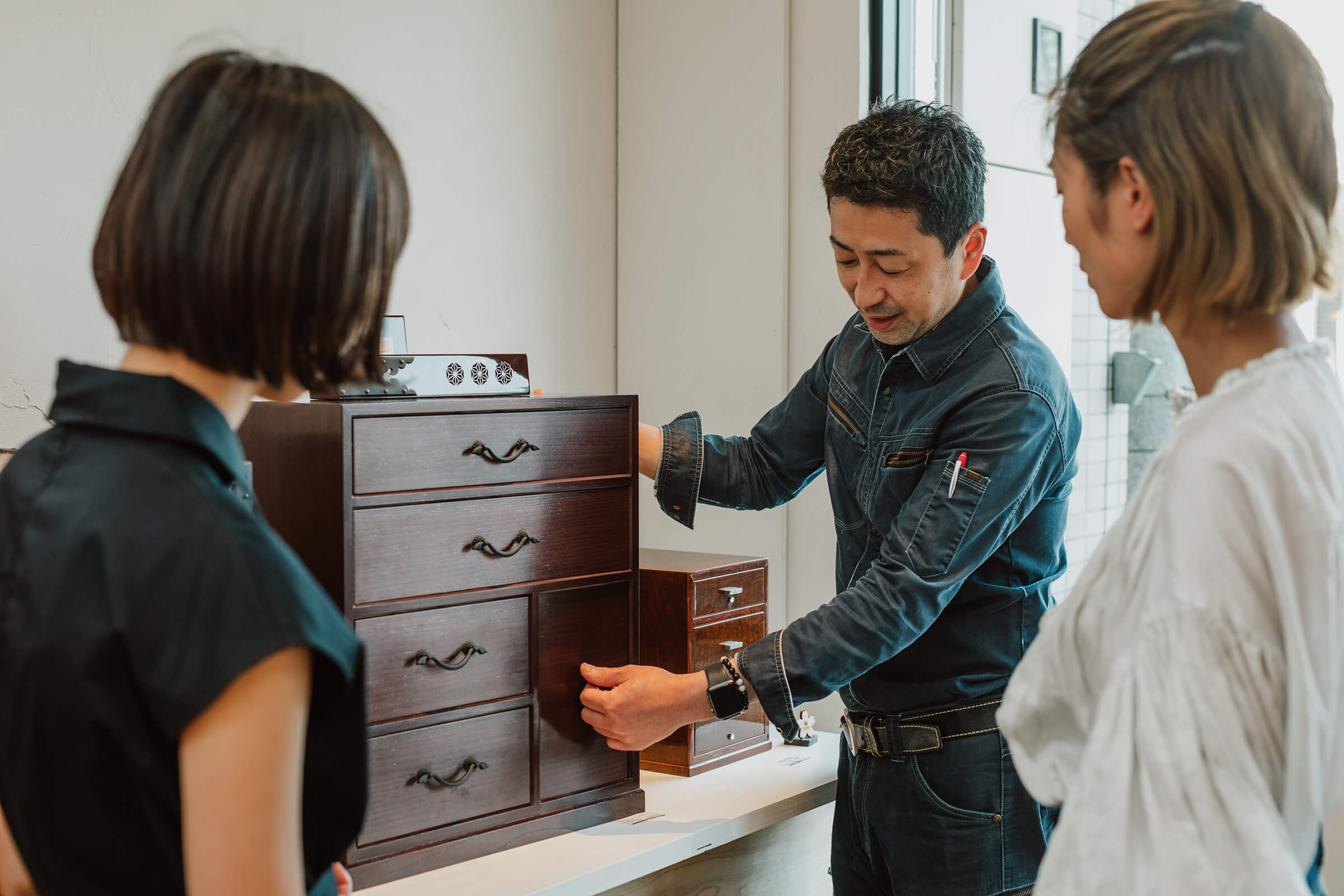
Mr. Norikazu Oyanagi, the fourth generation of the family, will teach us about the techniques of Echizen tansu.These drawers may look ordinary, but they are in fact full of tricks.
They also have complicated tricks, such as locks that do not open easily and drawers with more drawers hidden underneath.
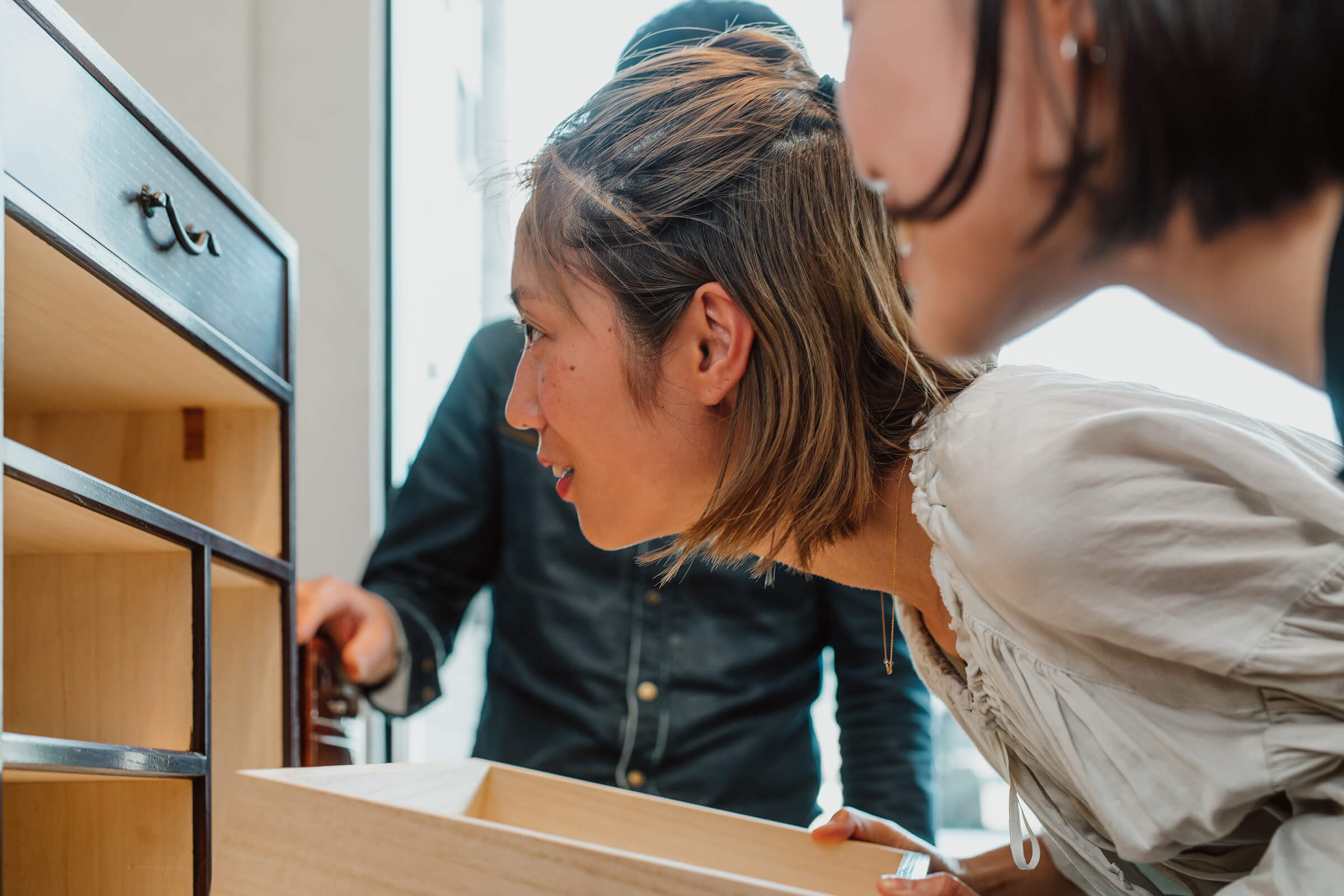
“It's amazing! This makes me want to teach someone,” said an excited Reina.
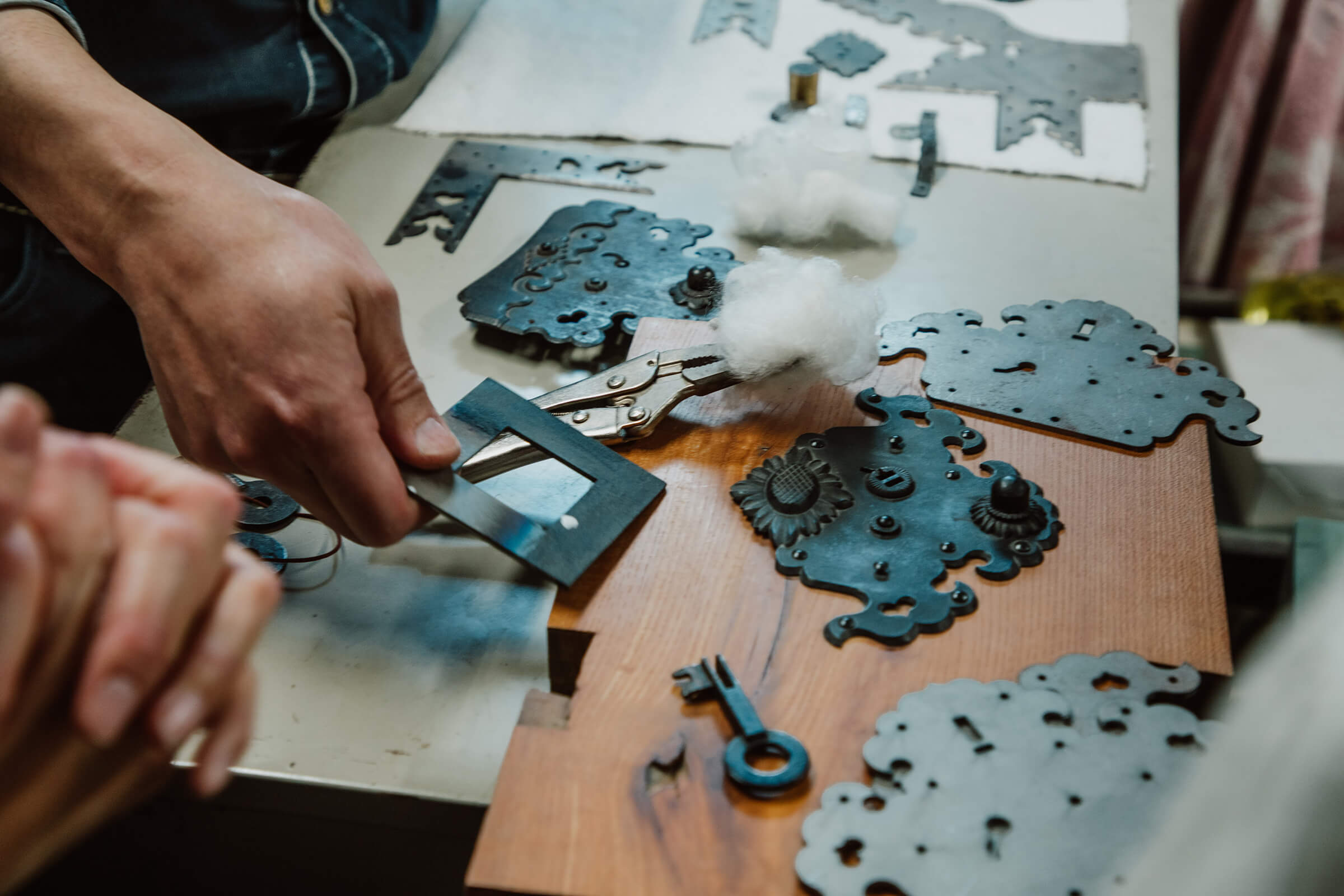
There is also a secret to the iron ornamental metal fittings attached to Echizen tansu.
“It is meant to ward off evil.The cloud-like design is based on the 'Nyoi stick' from 'Journey to the West.' It means that wishes come true because it can be freely stretched and shrunk as desired.The chests are talismans, protecting the family,” says Mr. Oyanagi.
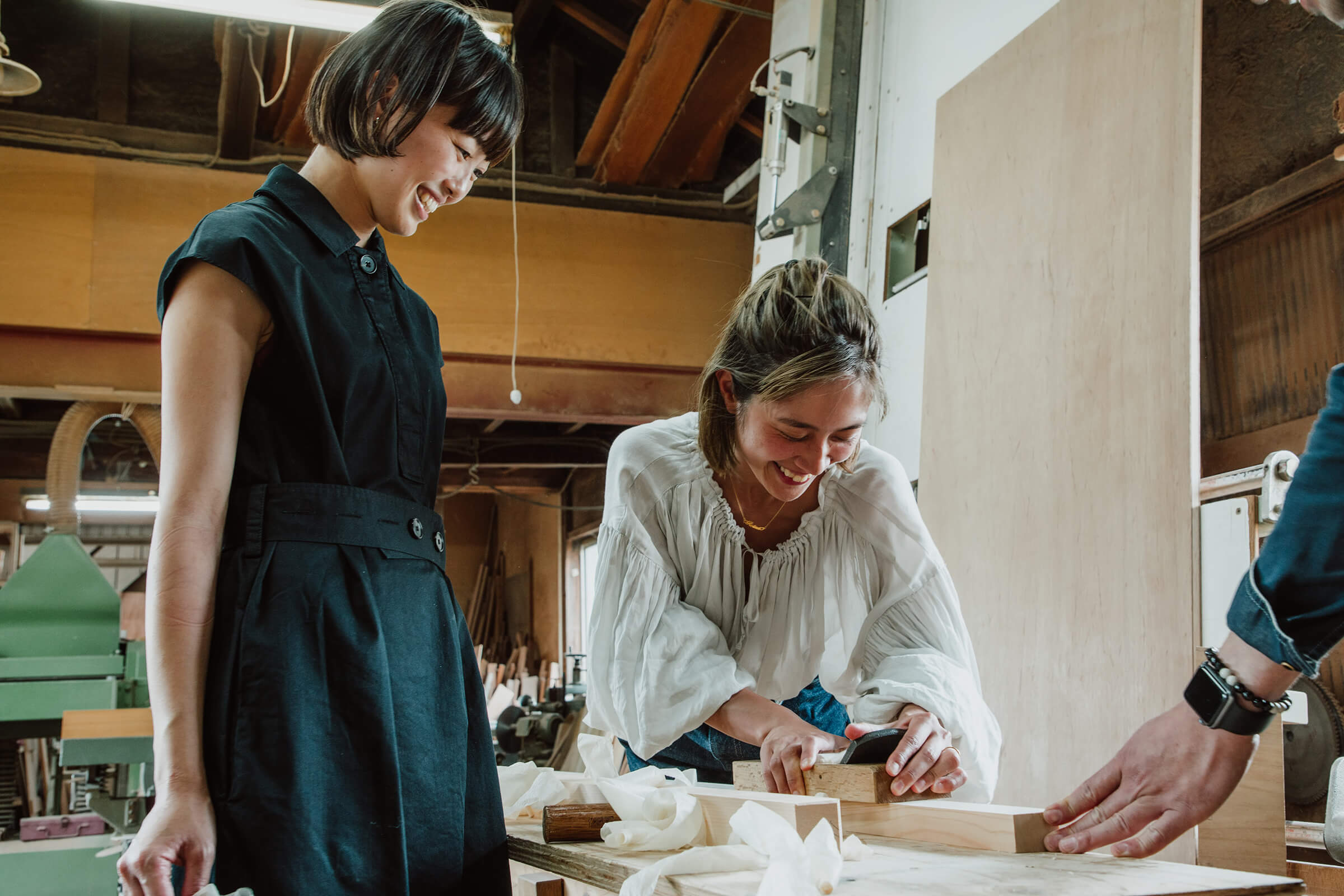
We also had the opportunity to experience wood planing, which is an essential part of chest making.When Mr. Oyanagi applies the planer, the work is shaved off smoothly, but when they try to do so, it is not done.
They were both overwhelmed by Mr. Oyanagi's high level of skill, saying, “Each technique is combined to create a highly finished Echizen tansu."
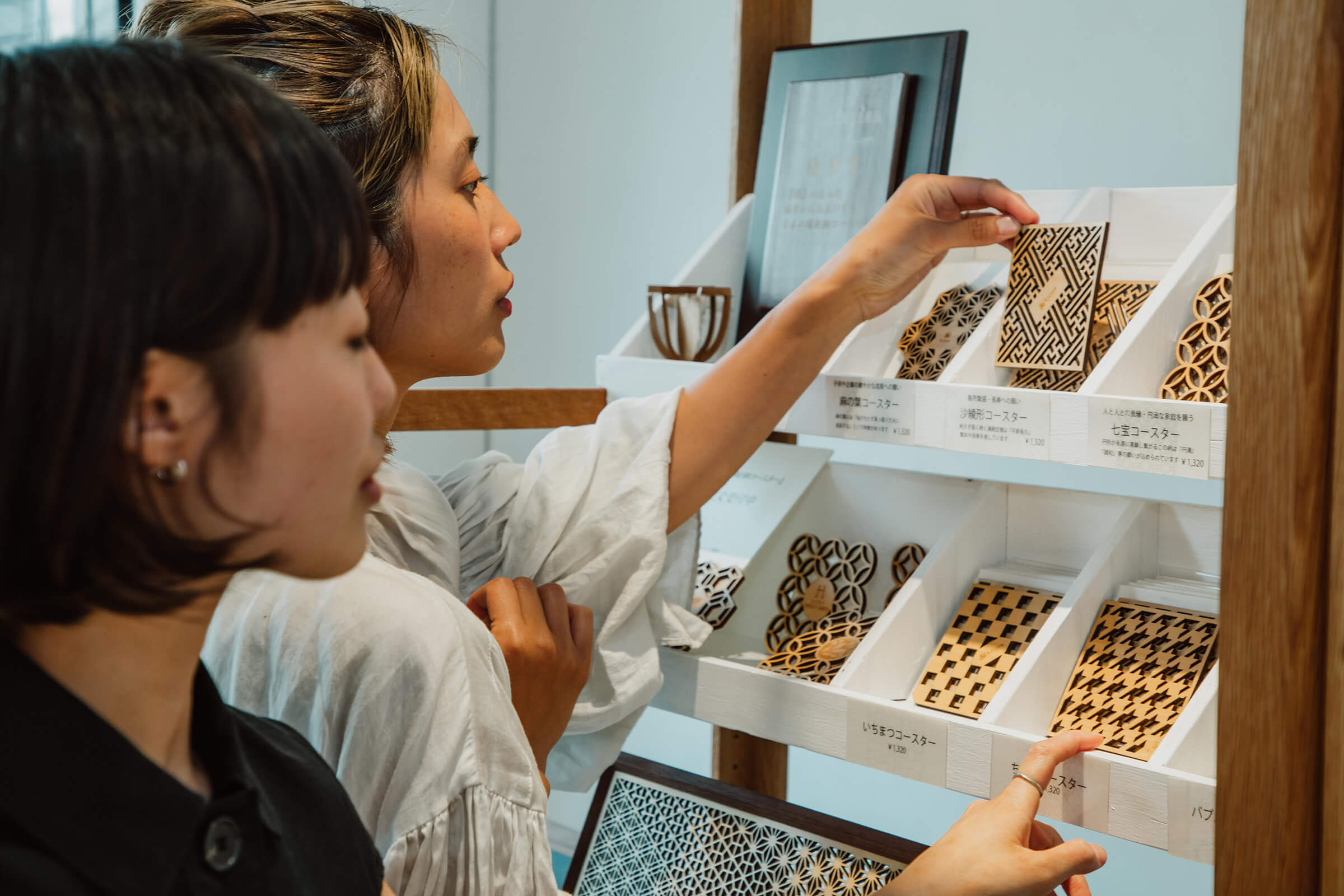
The trip to Echizen ended with the purchase of coasters featuring traditional Echizen tansu designs as souvenirs.
What did they think of this trip?
"Echizen washi paper, Echizen chests, and Echizen soba noodles all have their charms that can only be understood through experience.It was the most fun!" said Aya.
Reina, thoroughly satisfied, said, "The different cityscape was refreshing. I’d love to return and highly recommend it to hotel guests."
*sashimono techniques:Woodwork made by assembling wood without using nails.